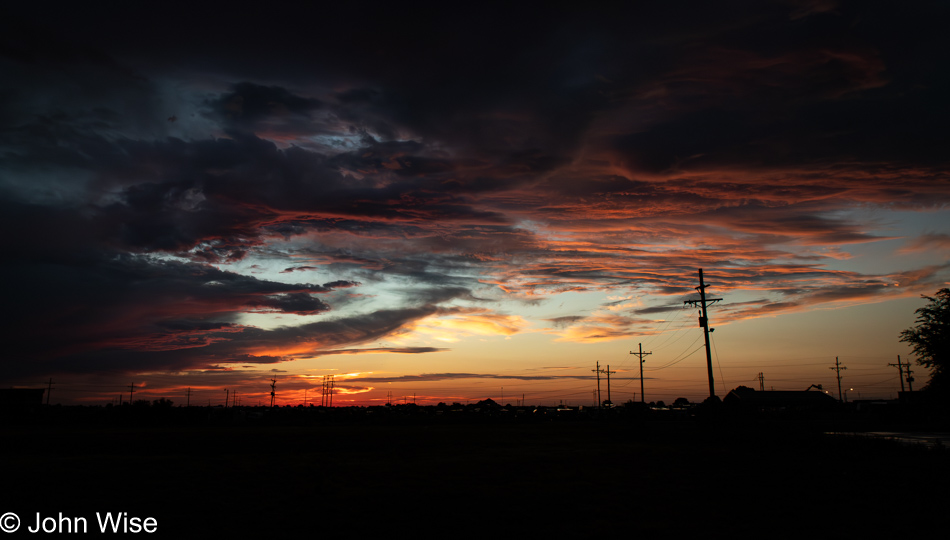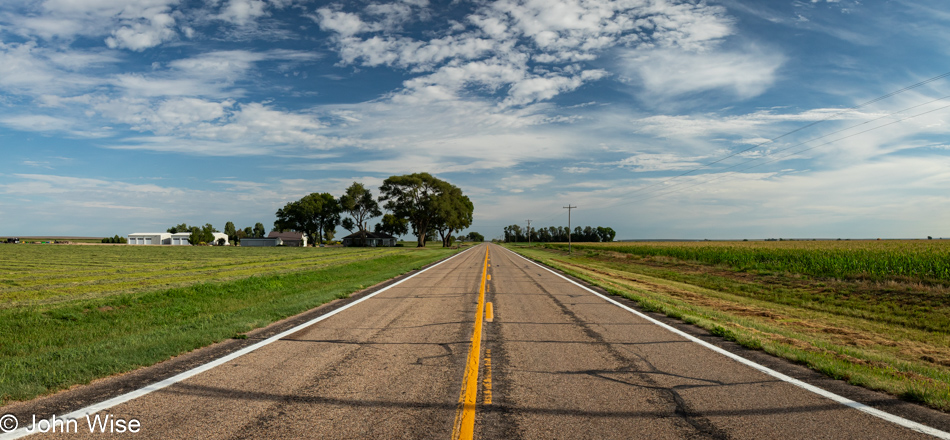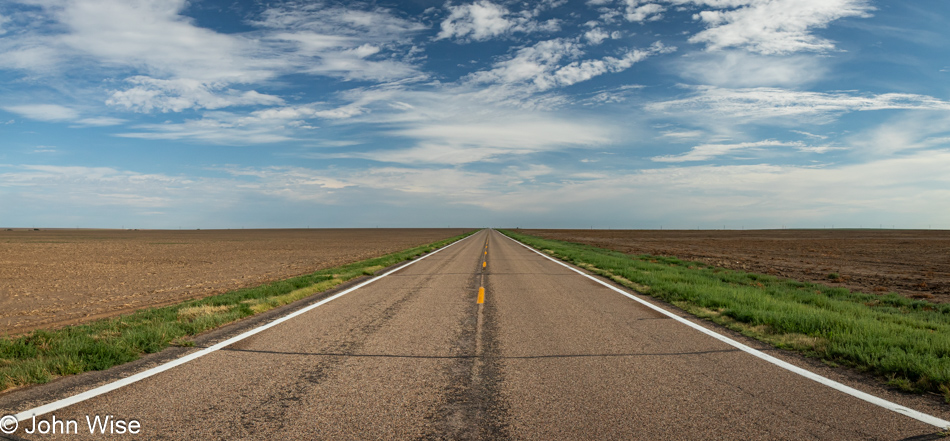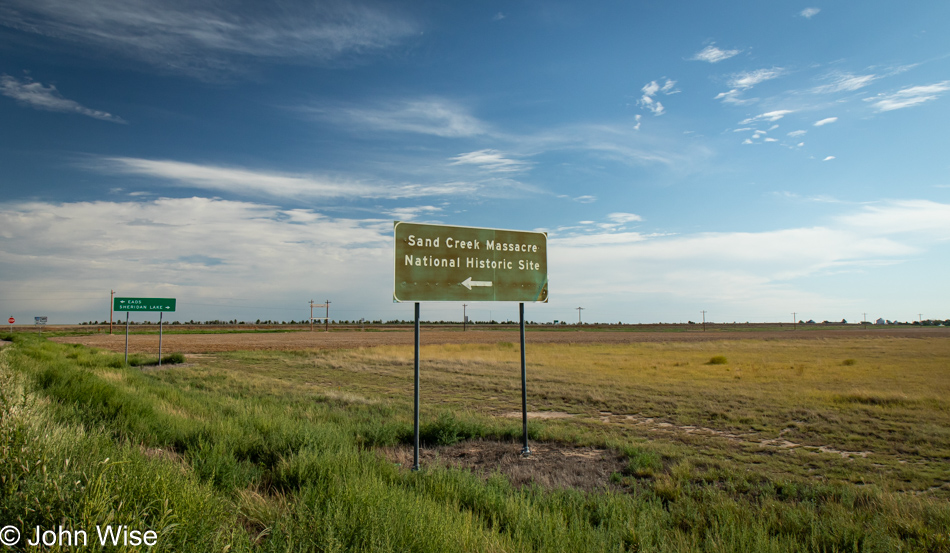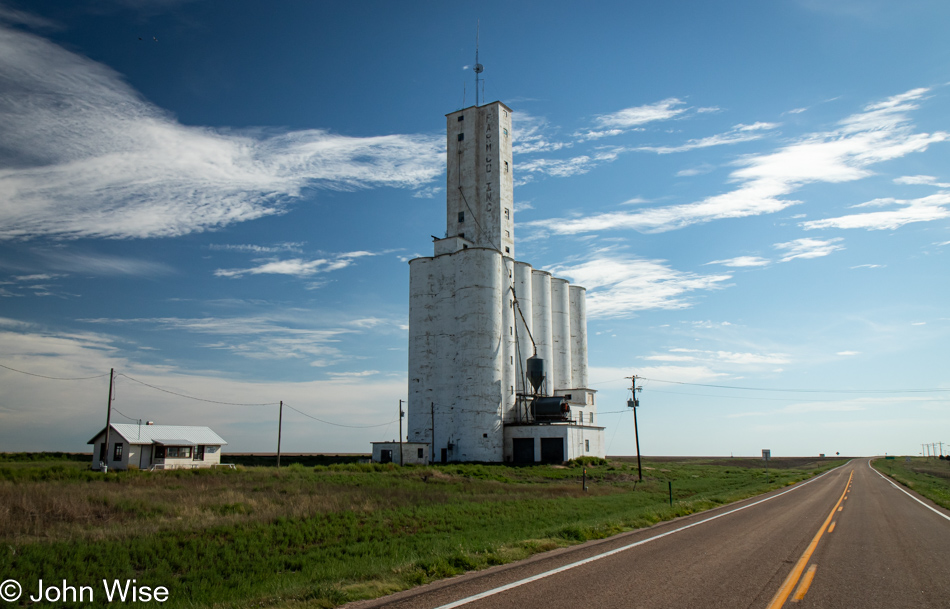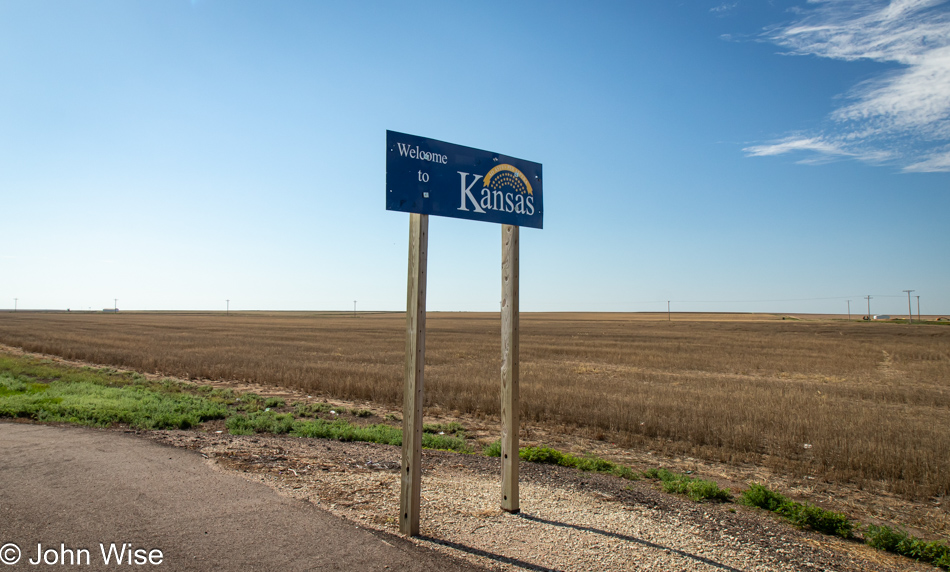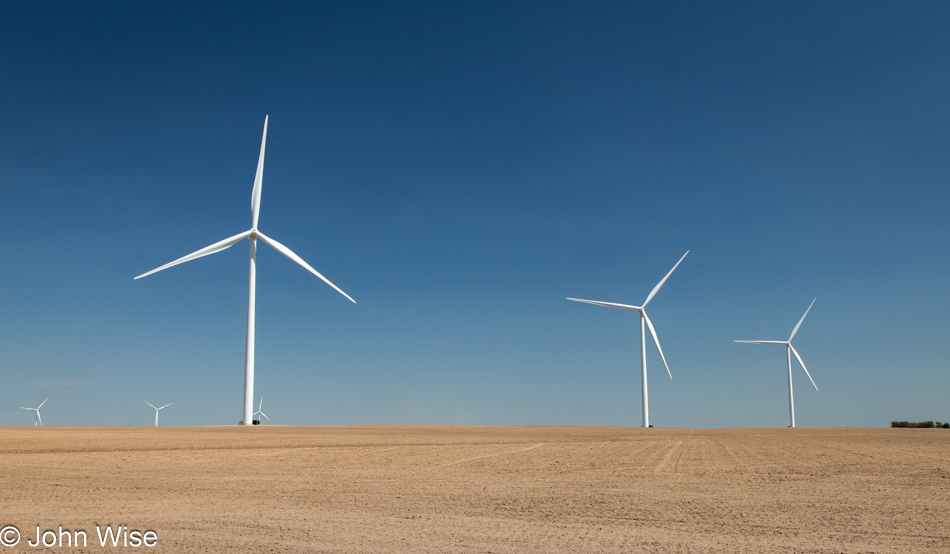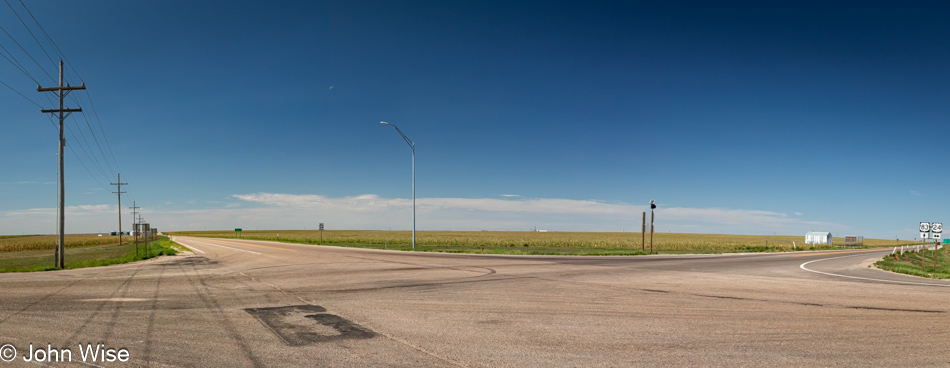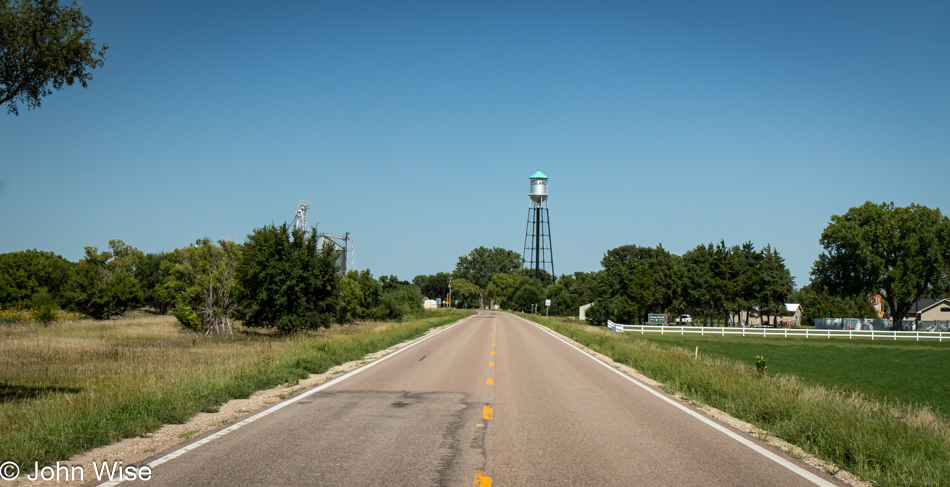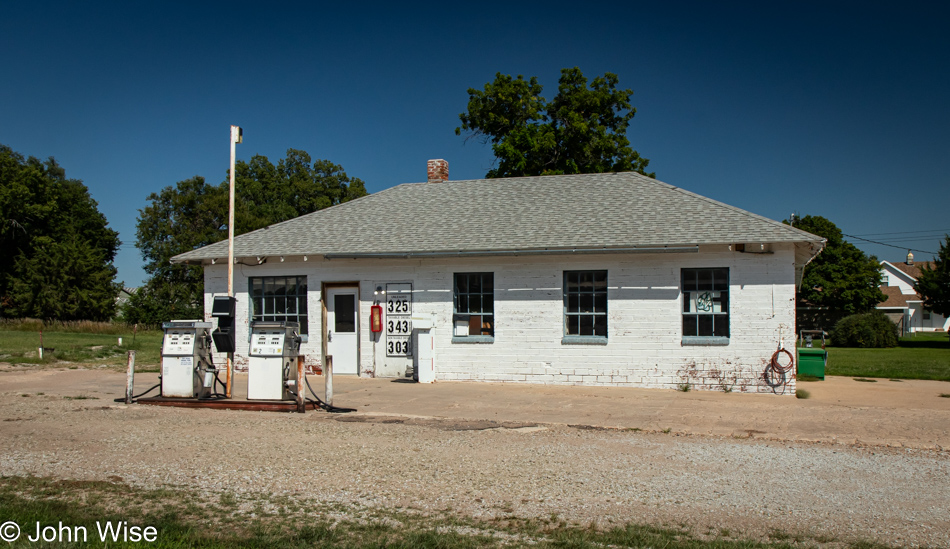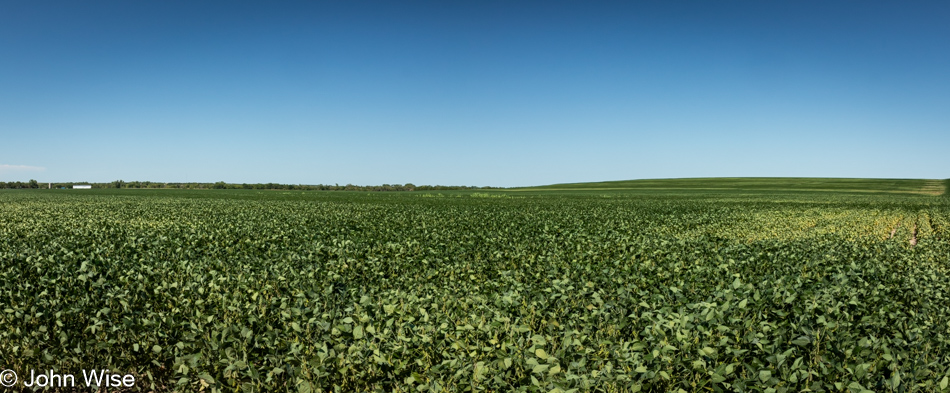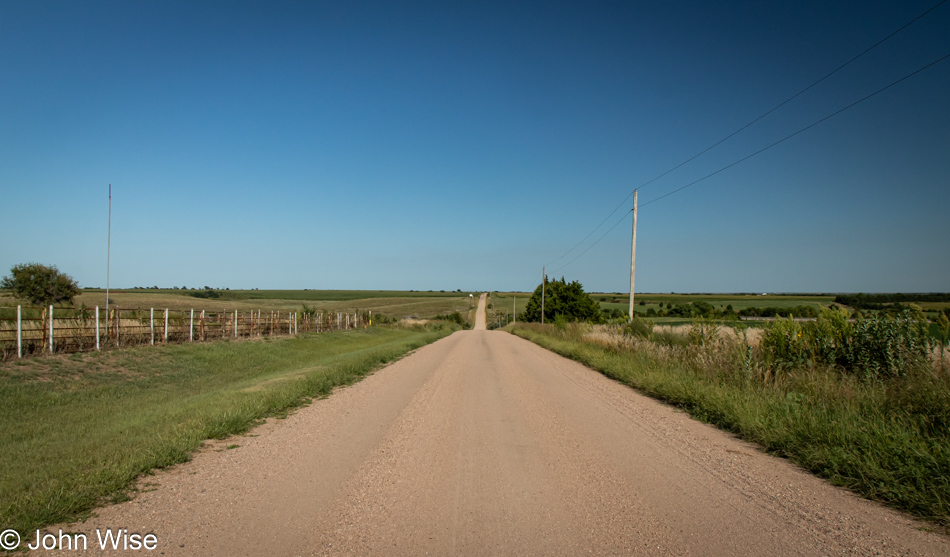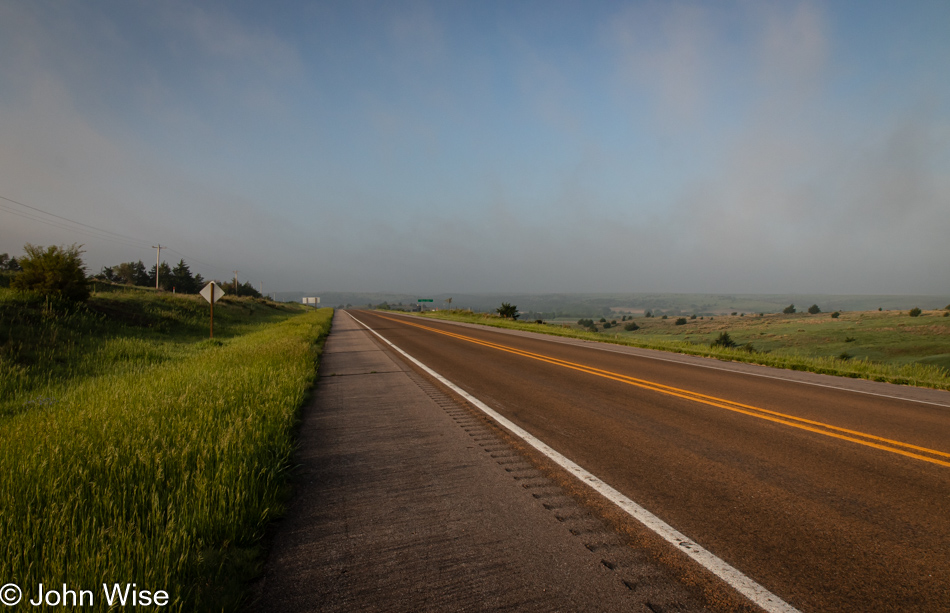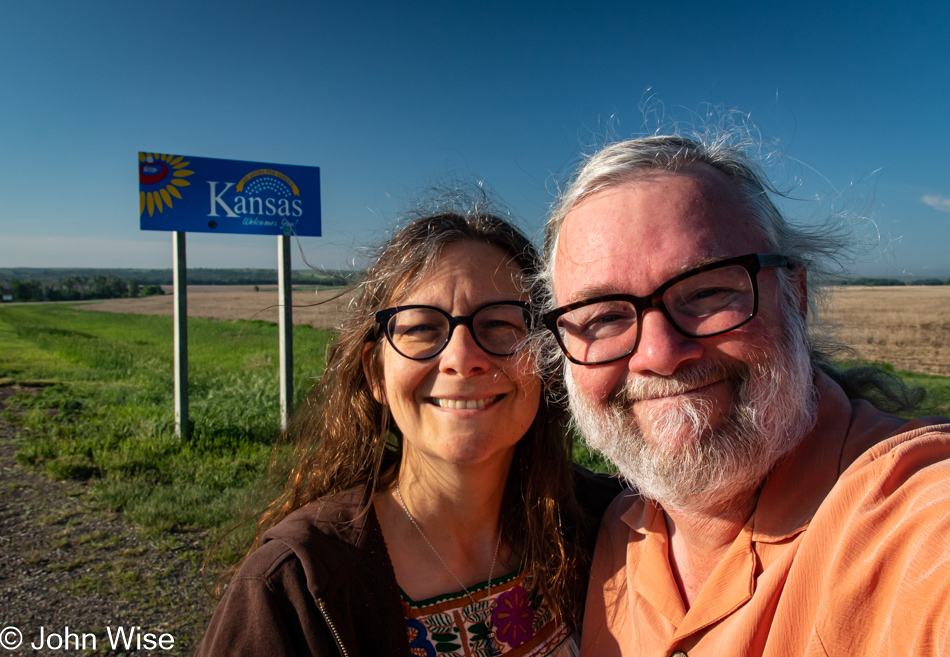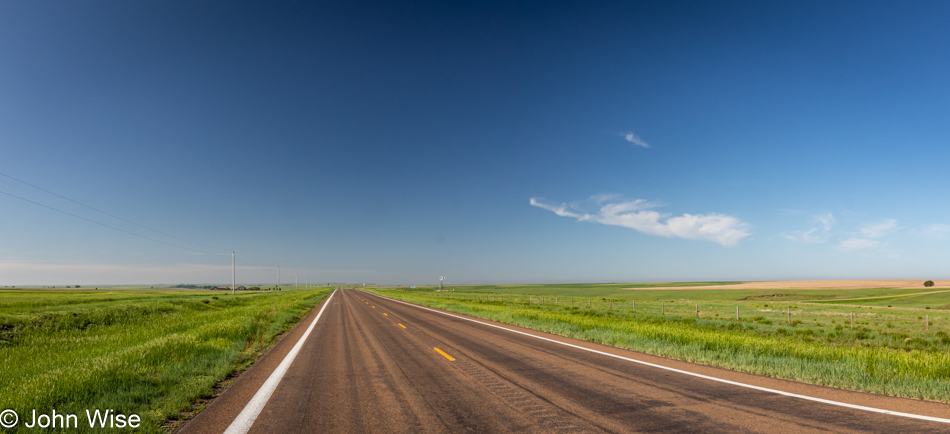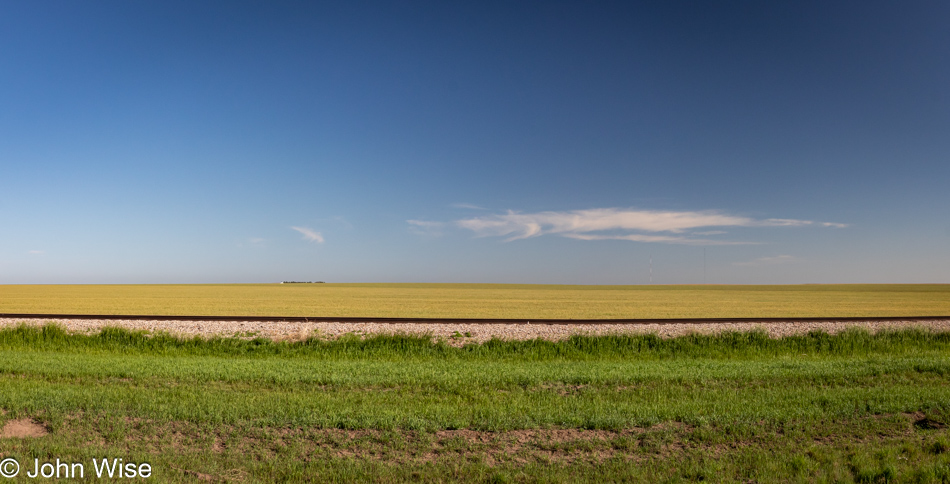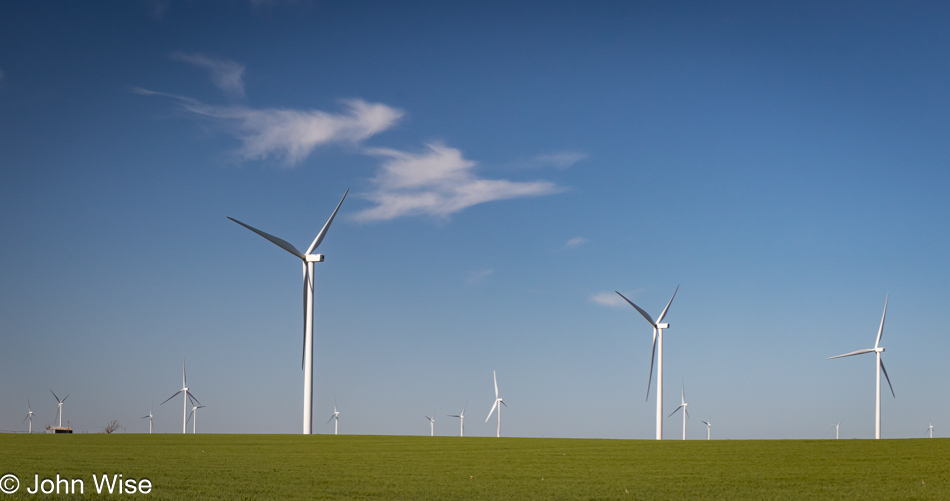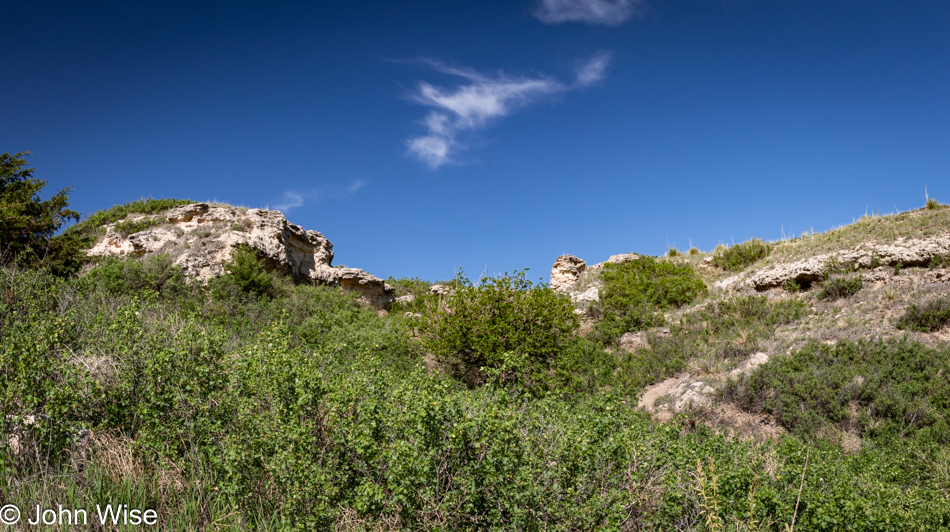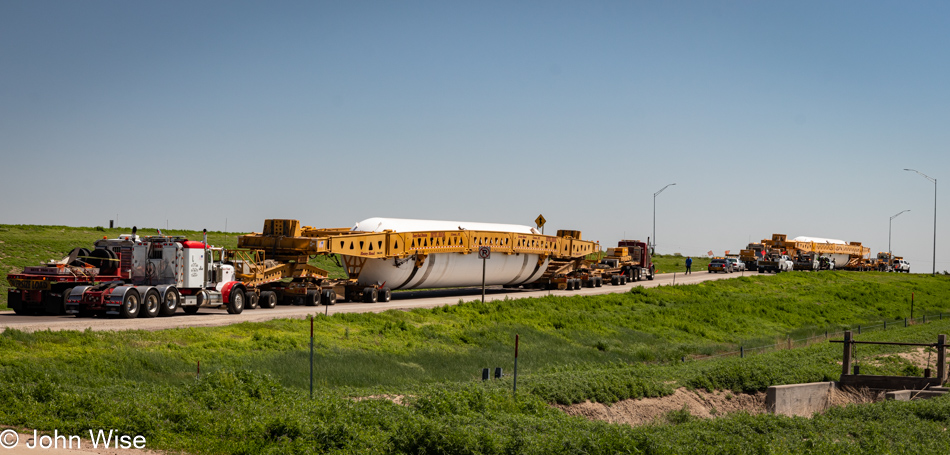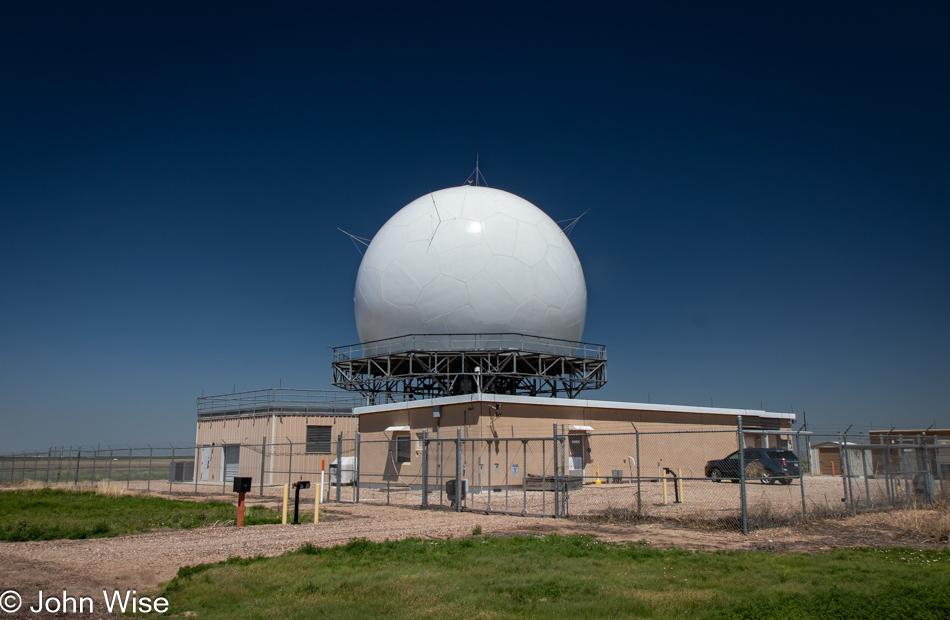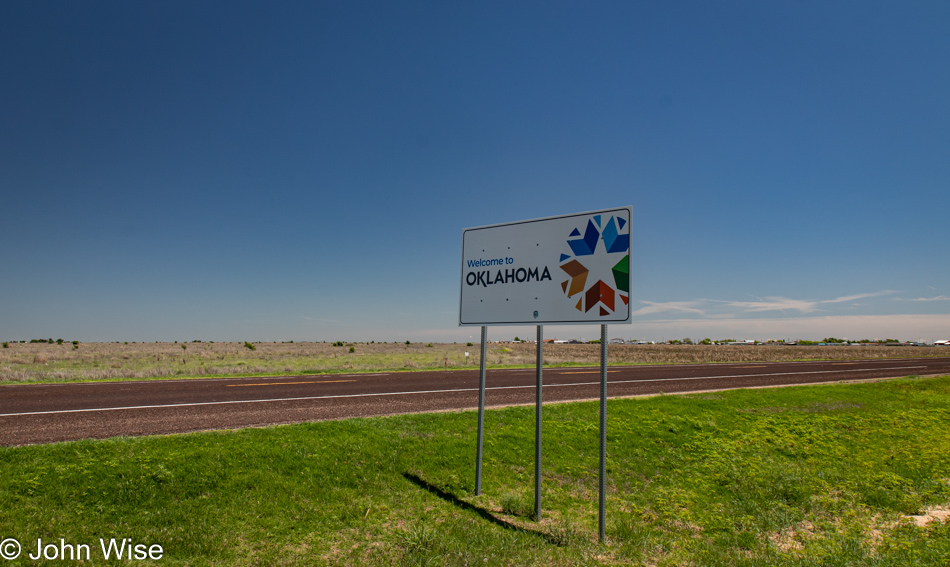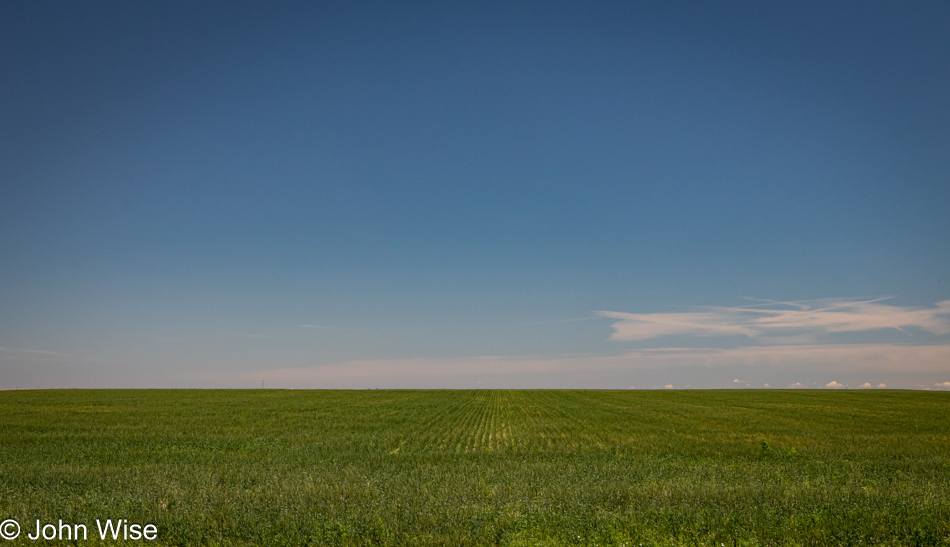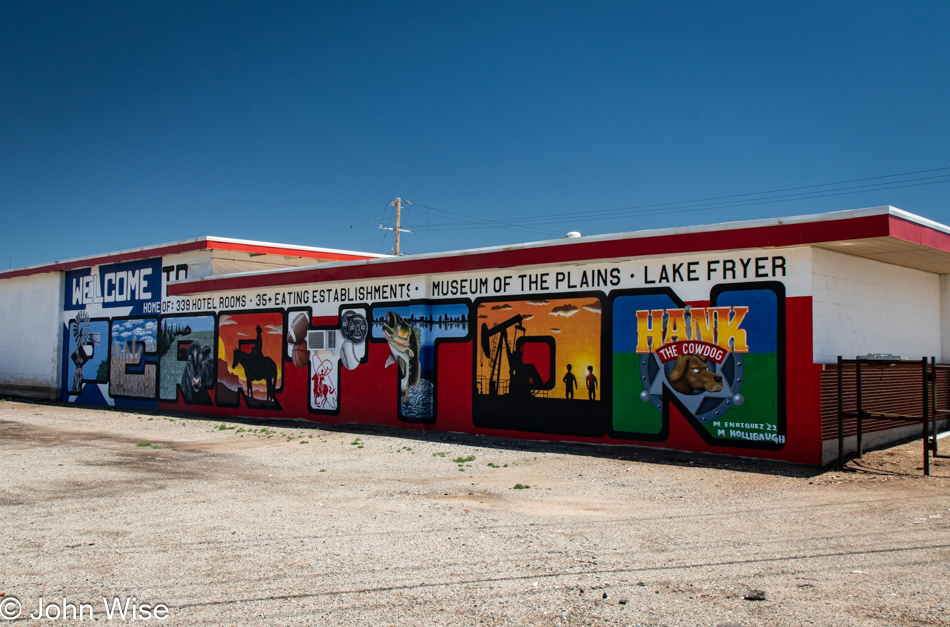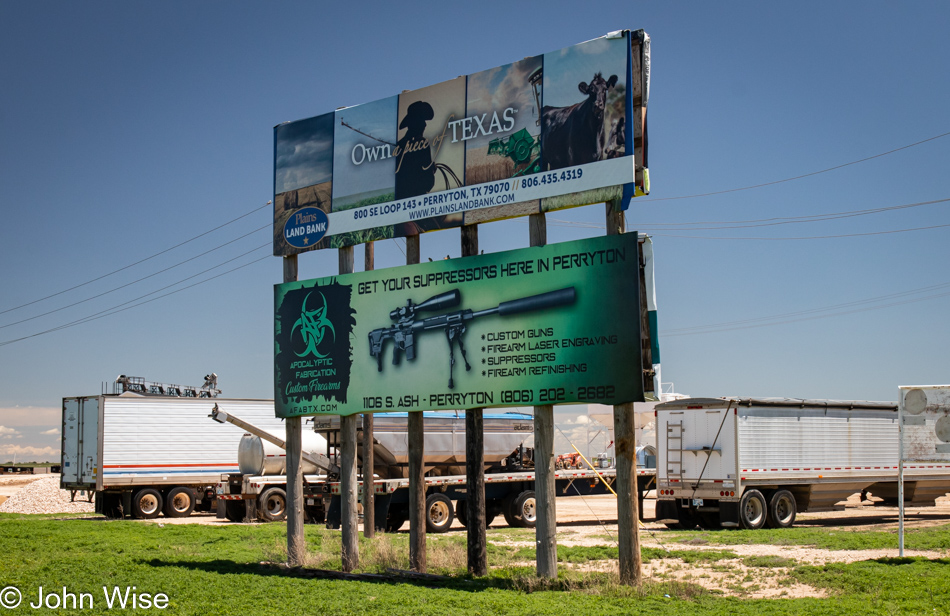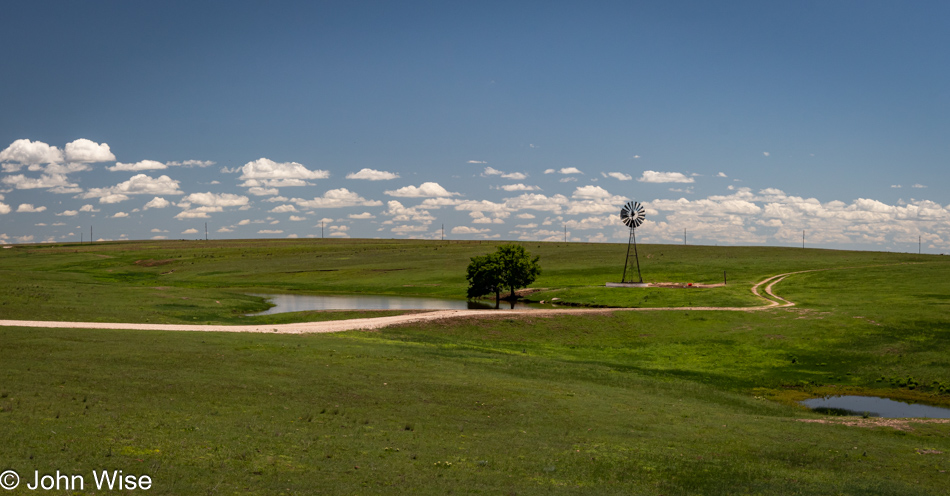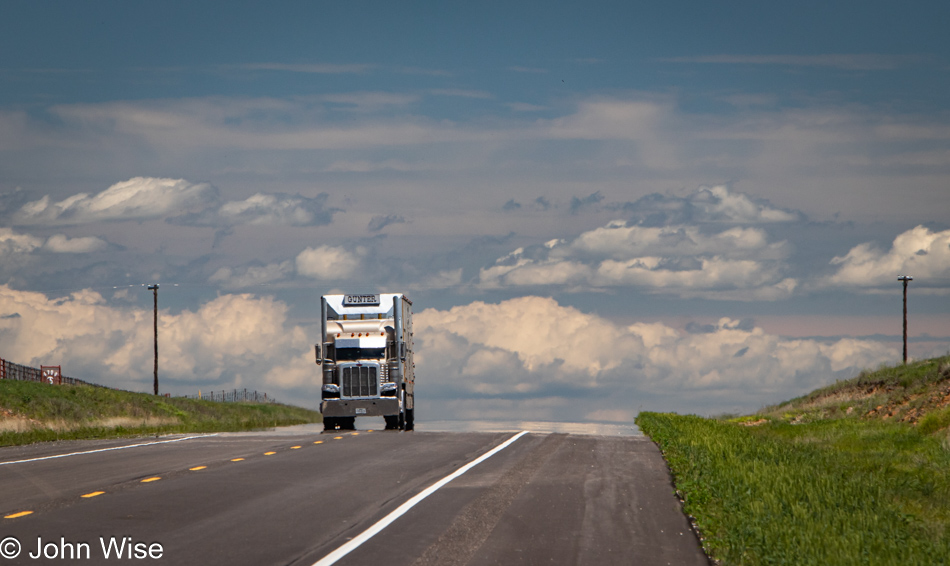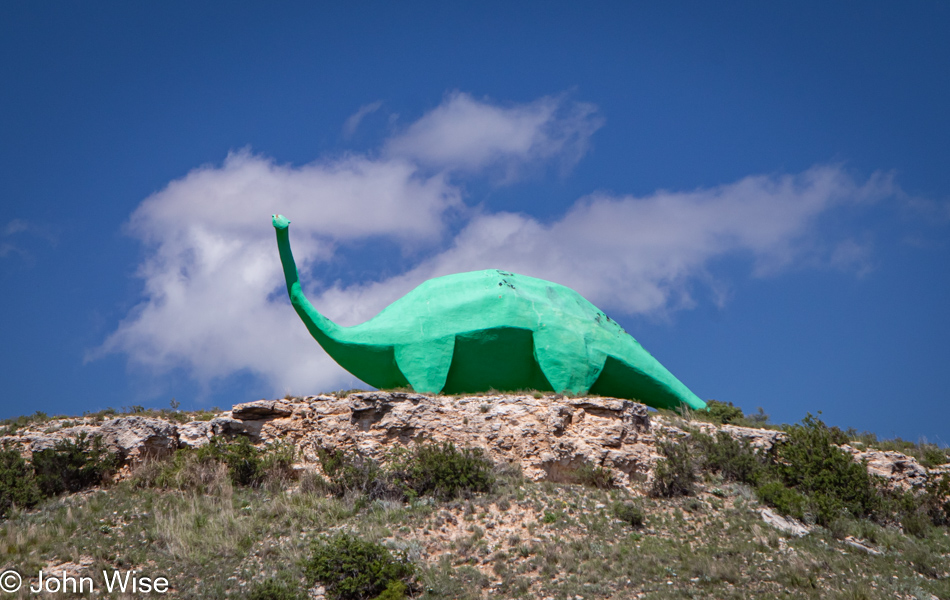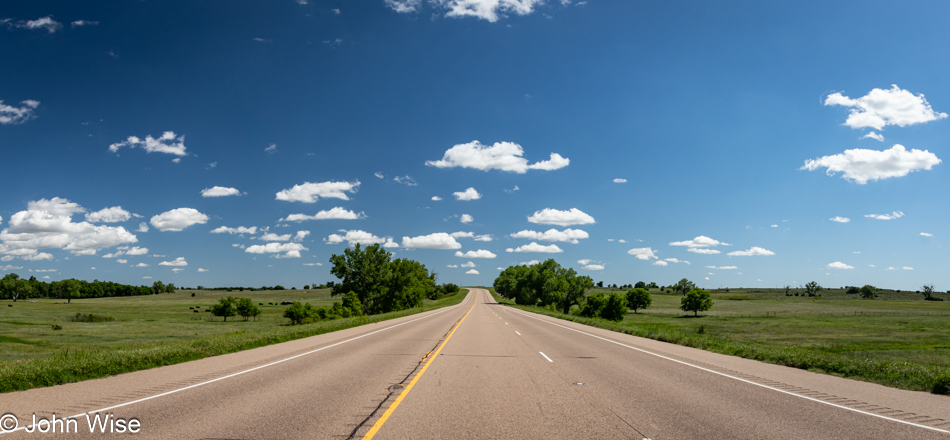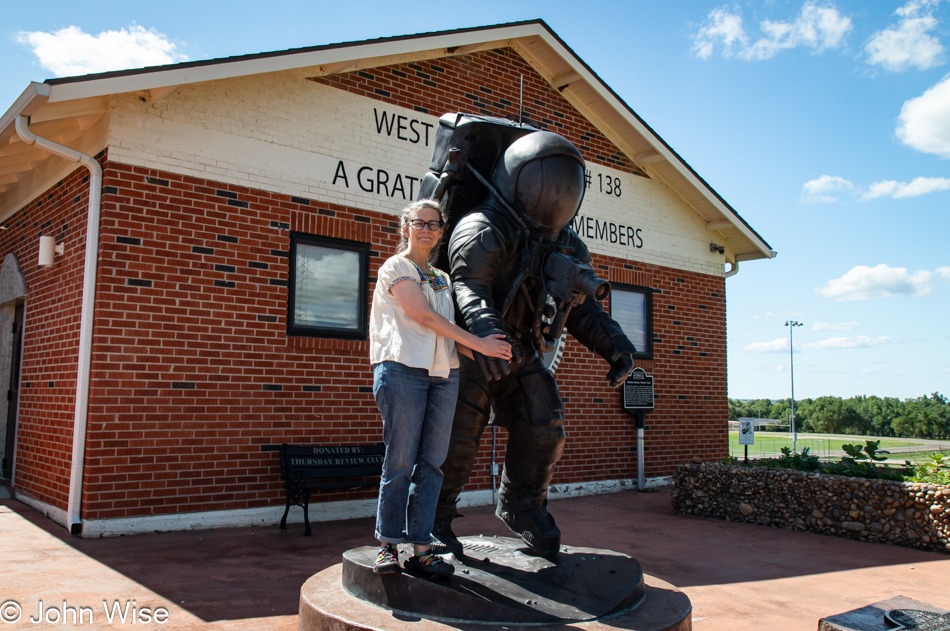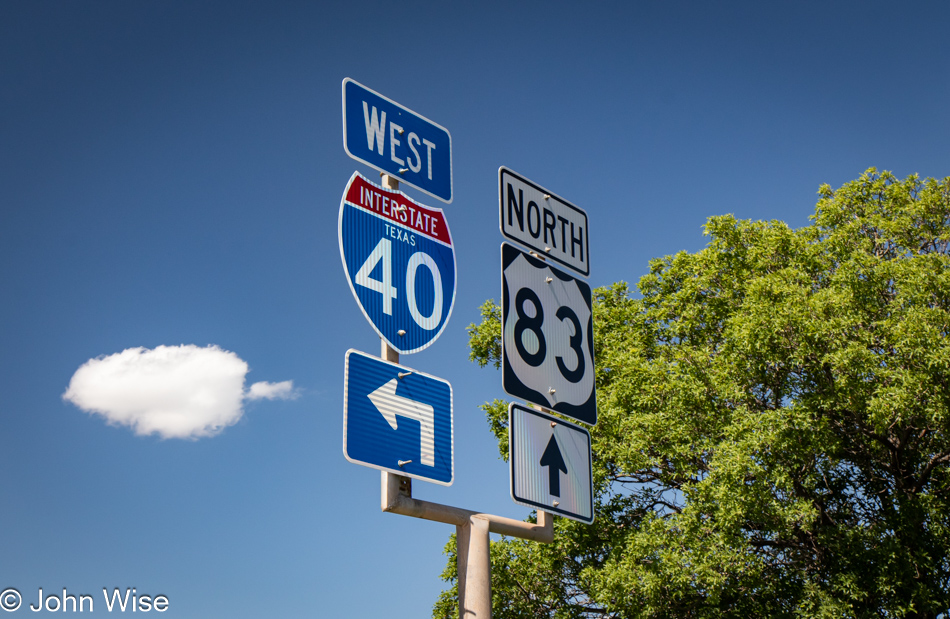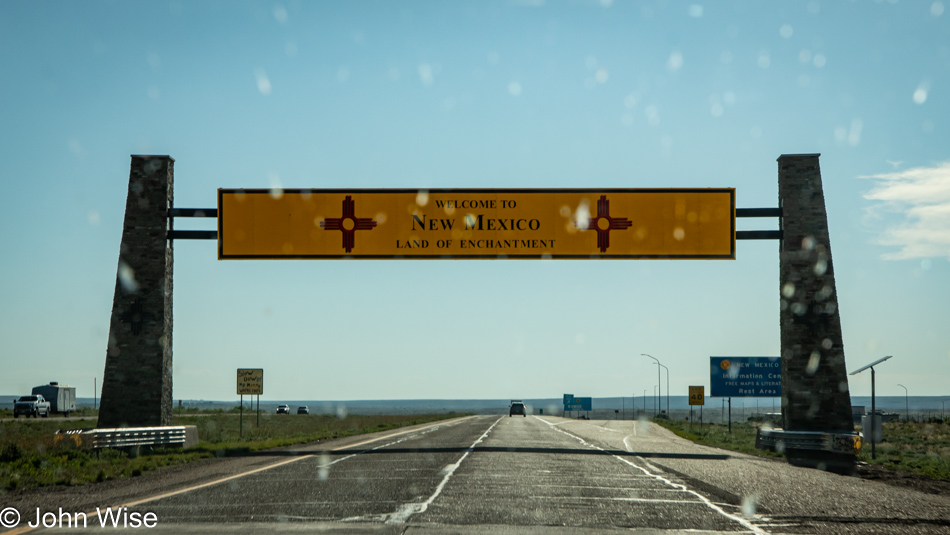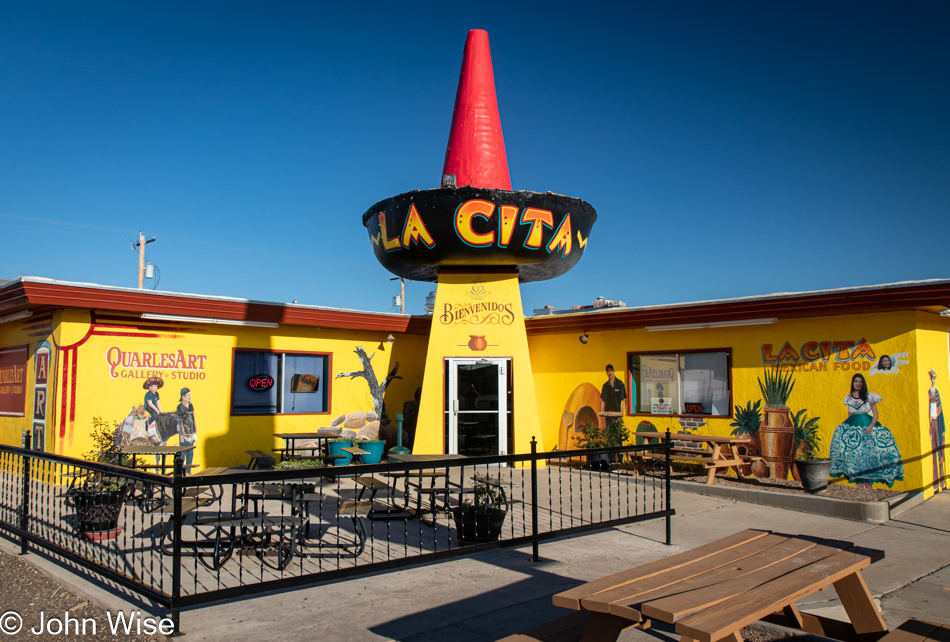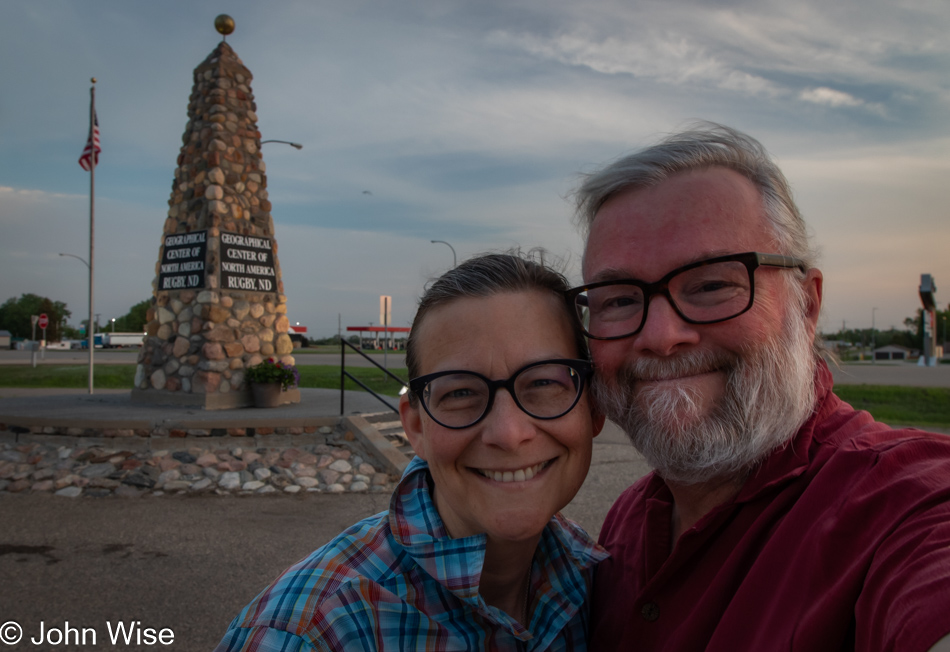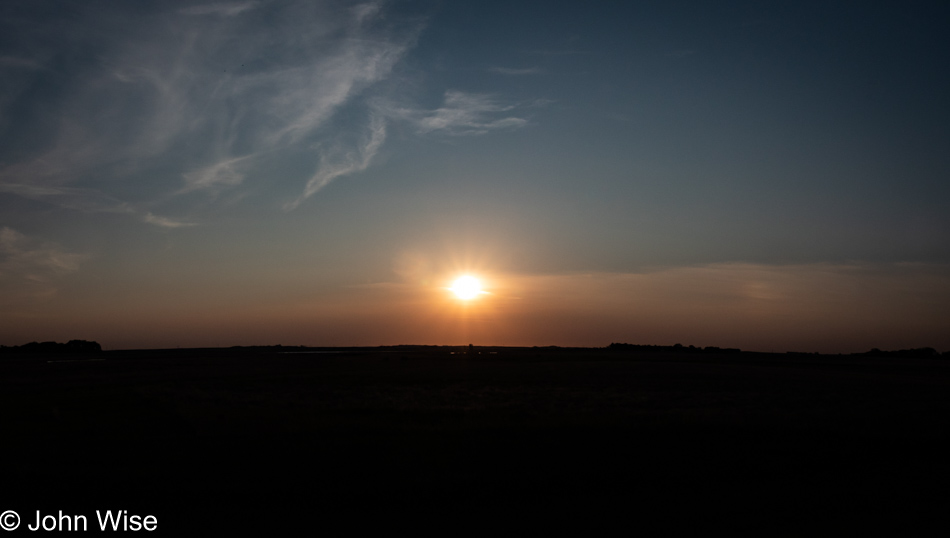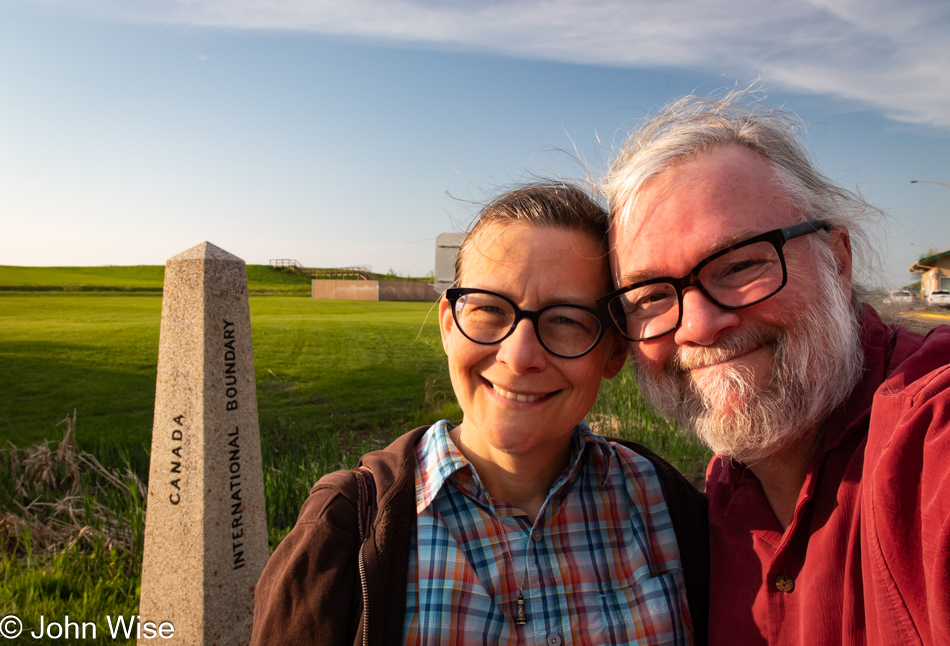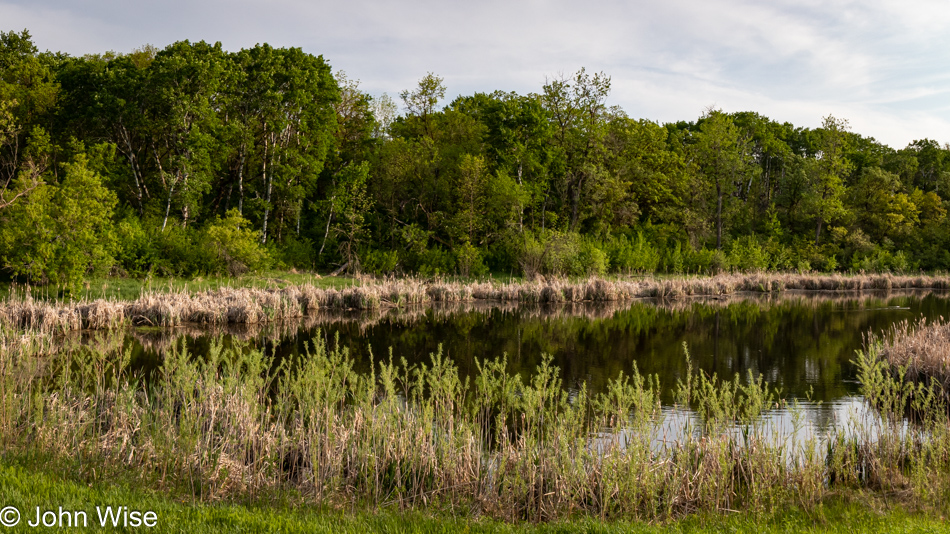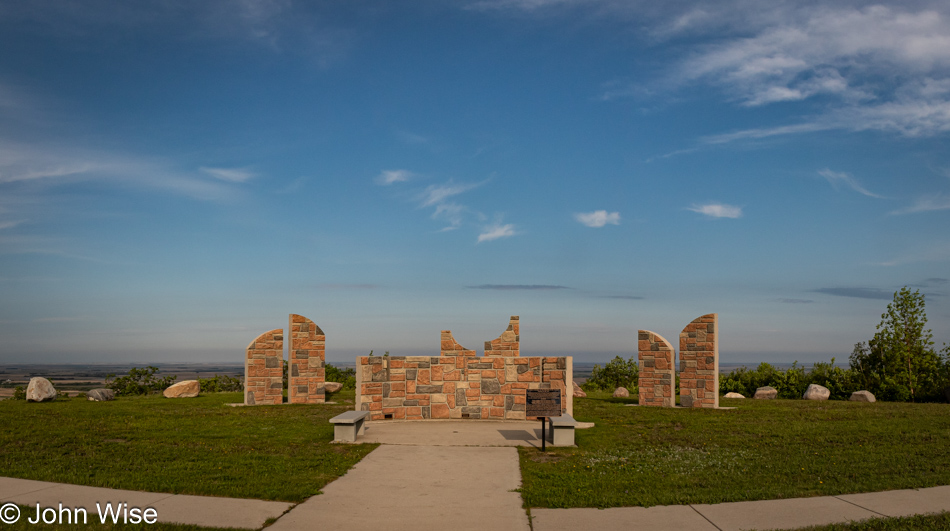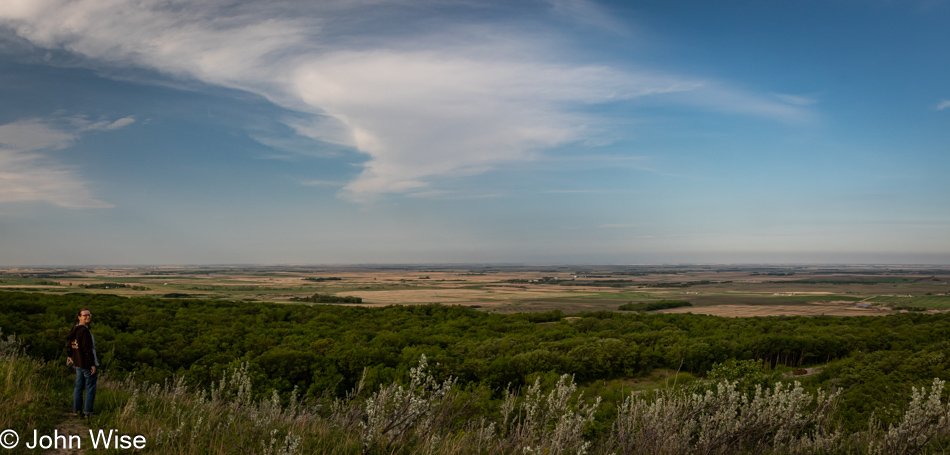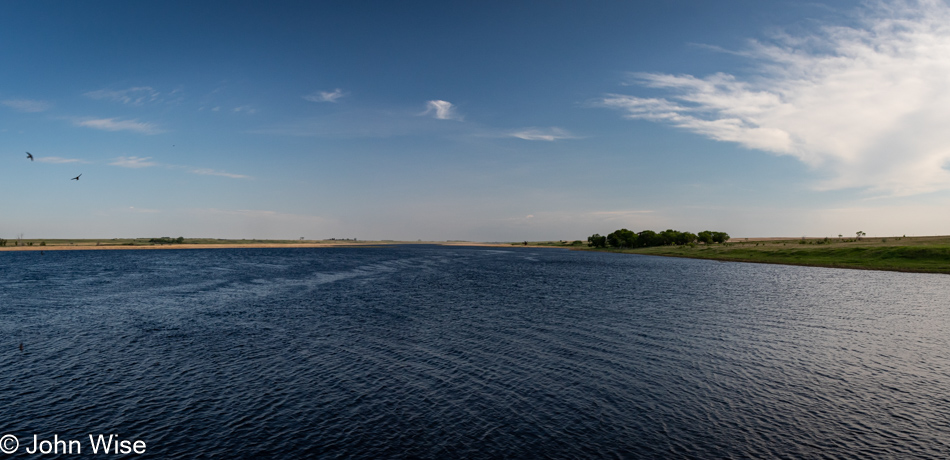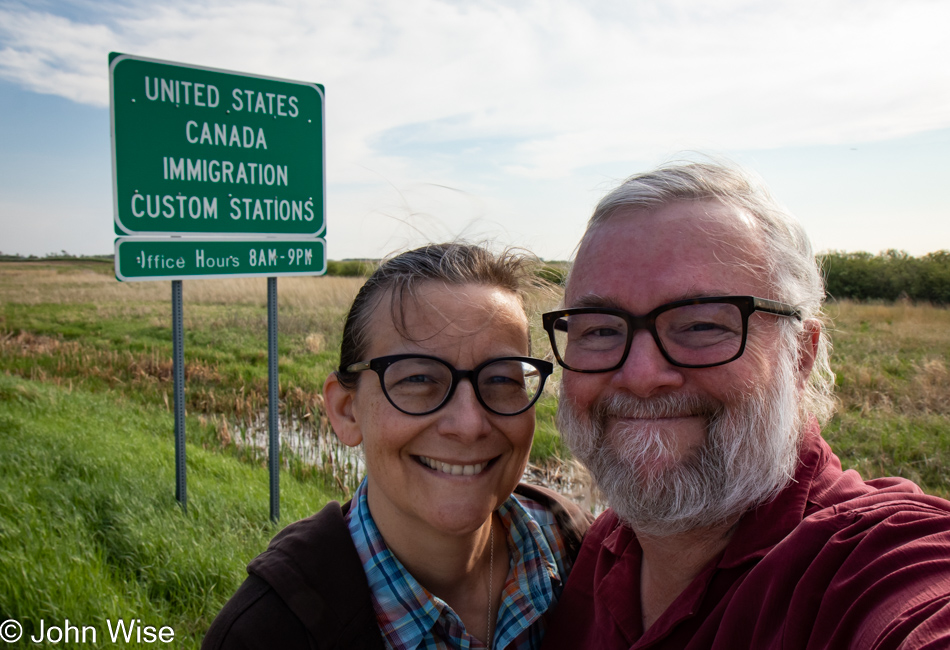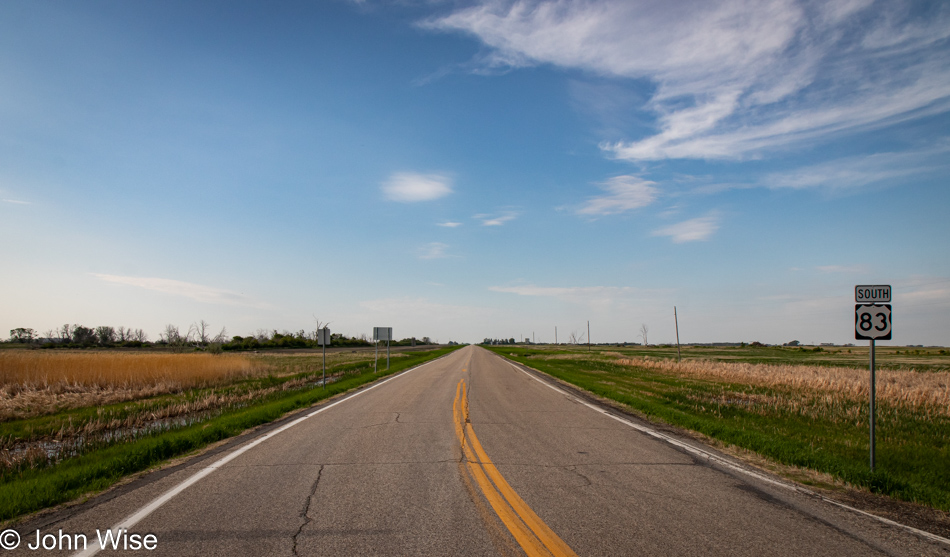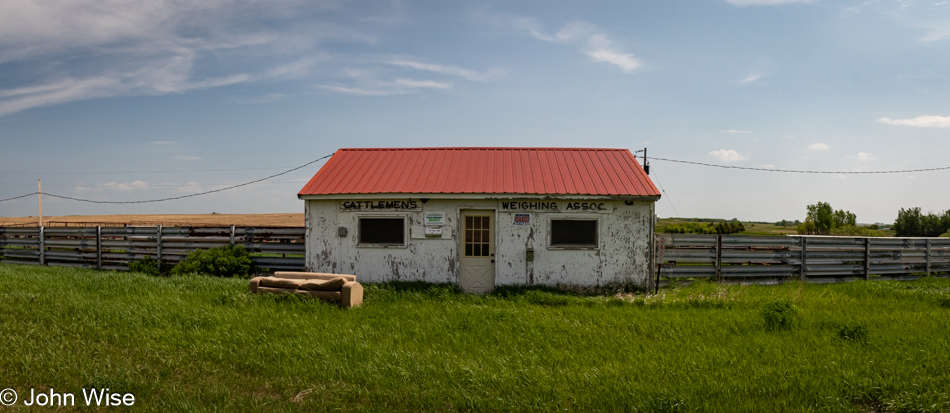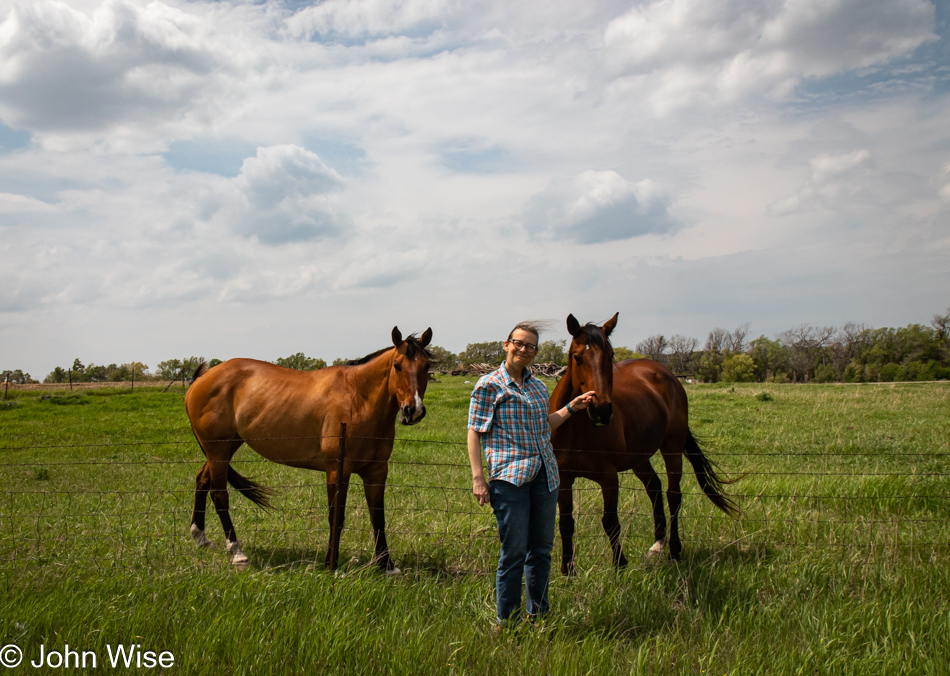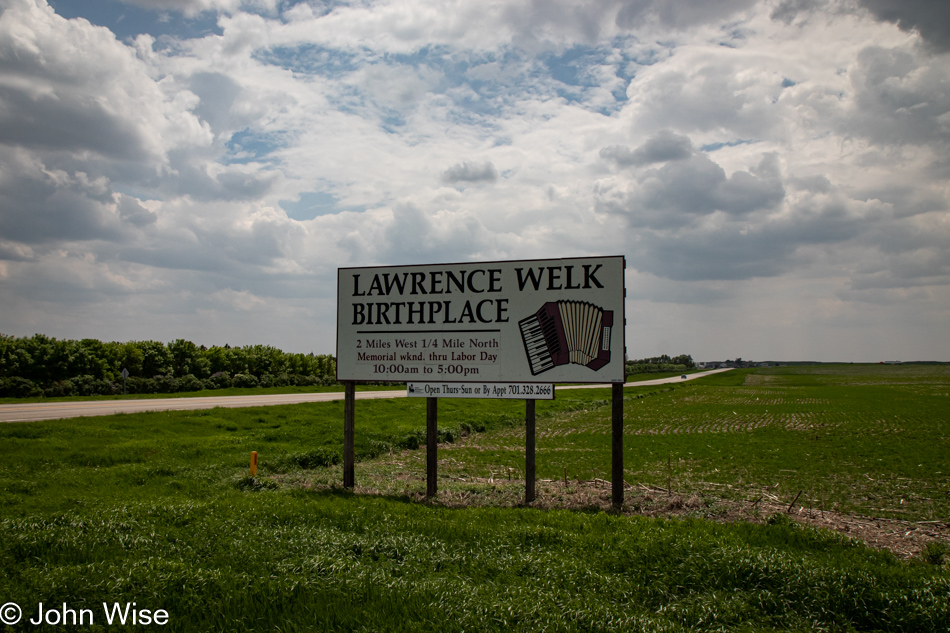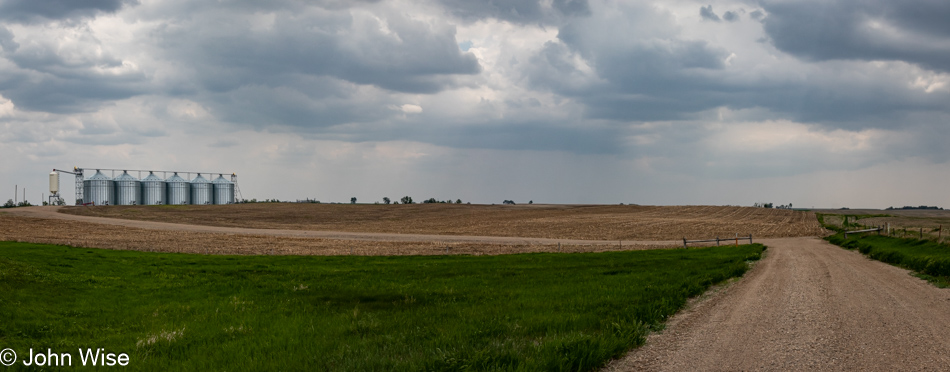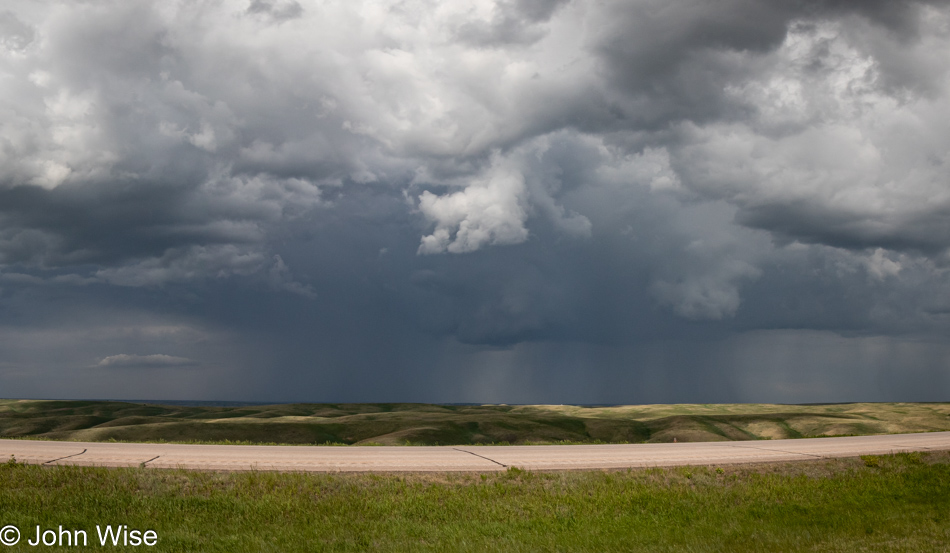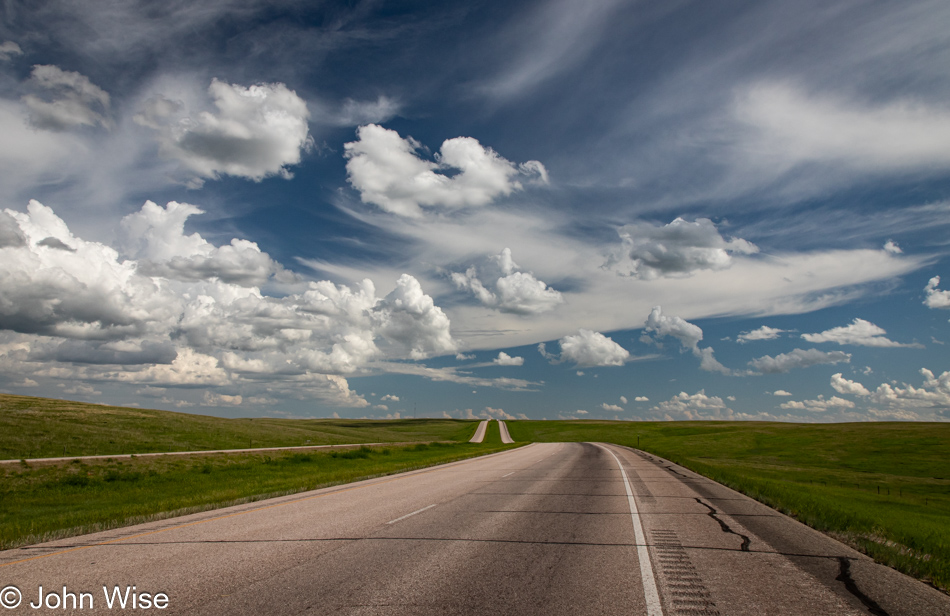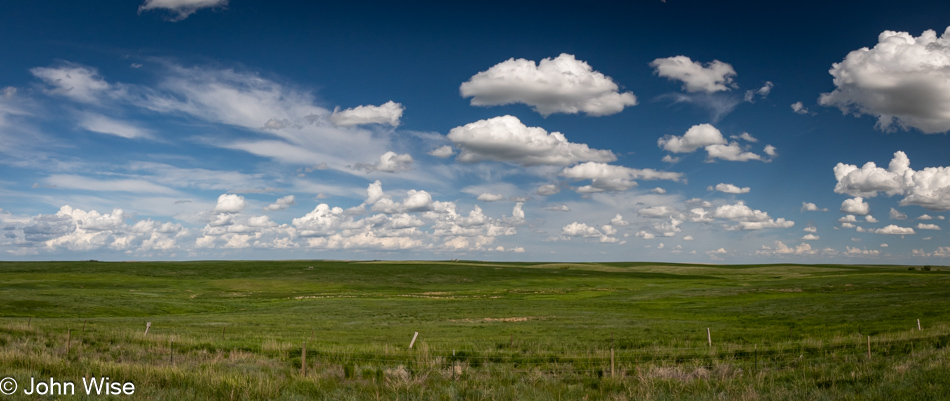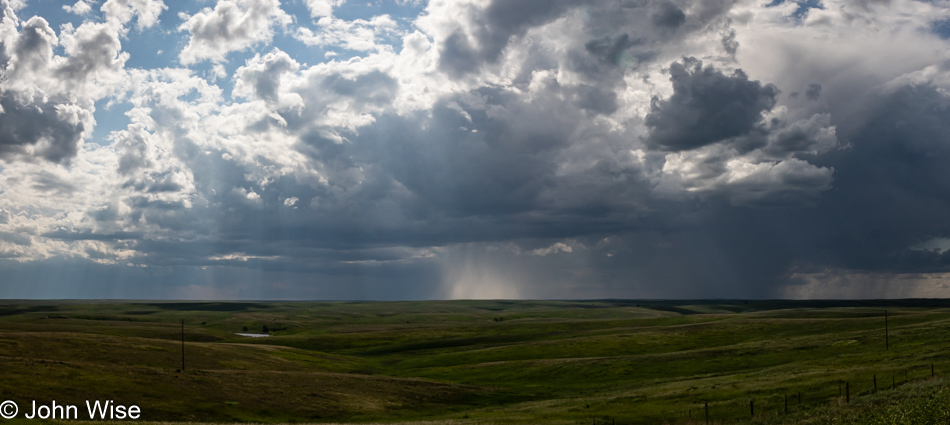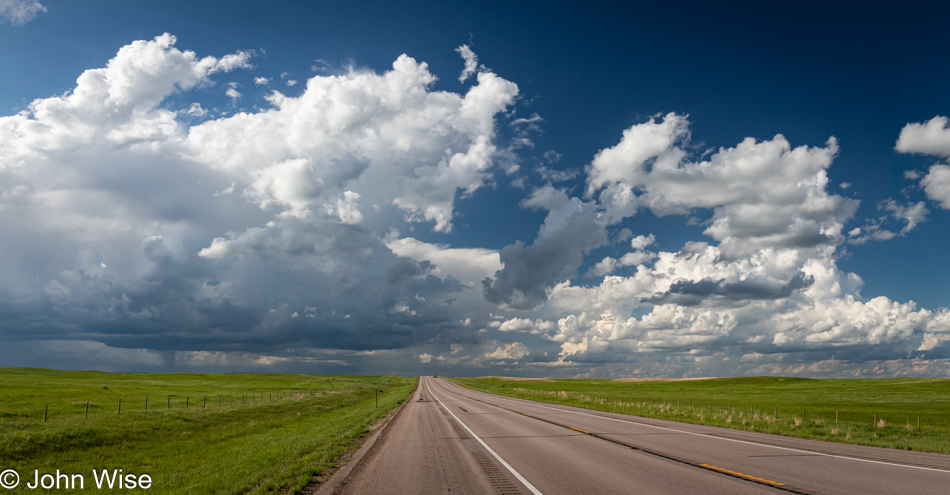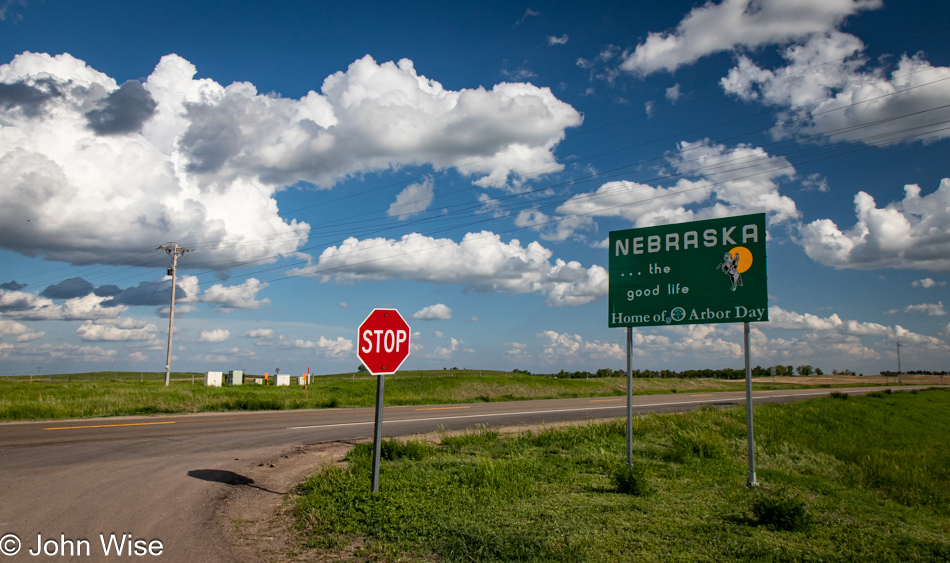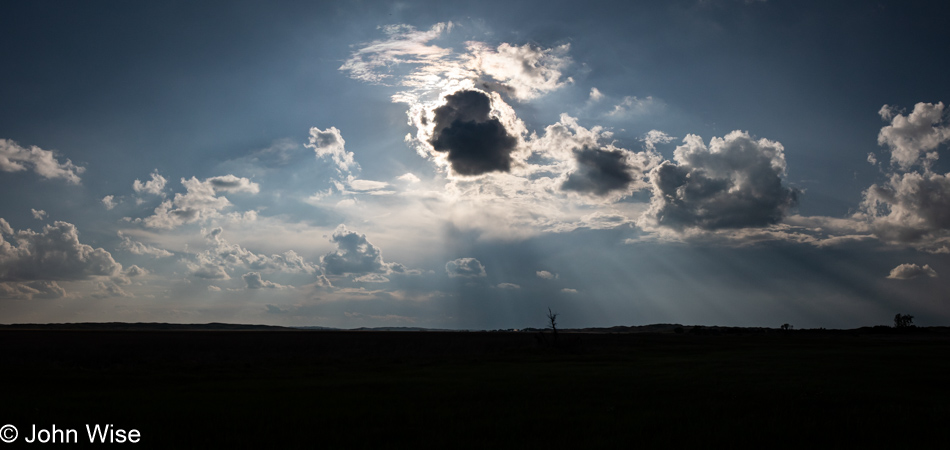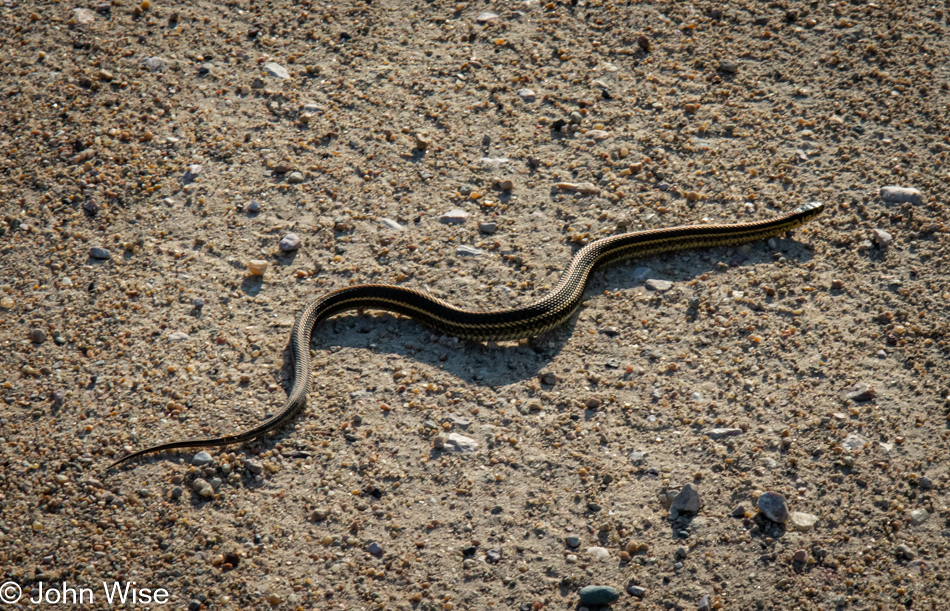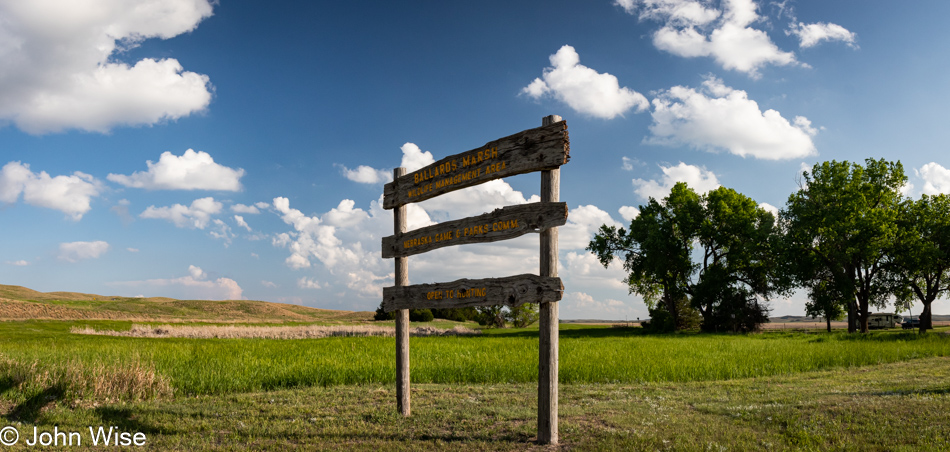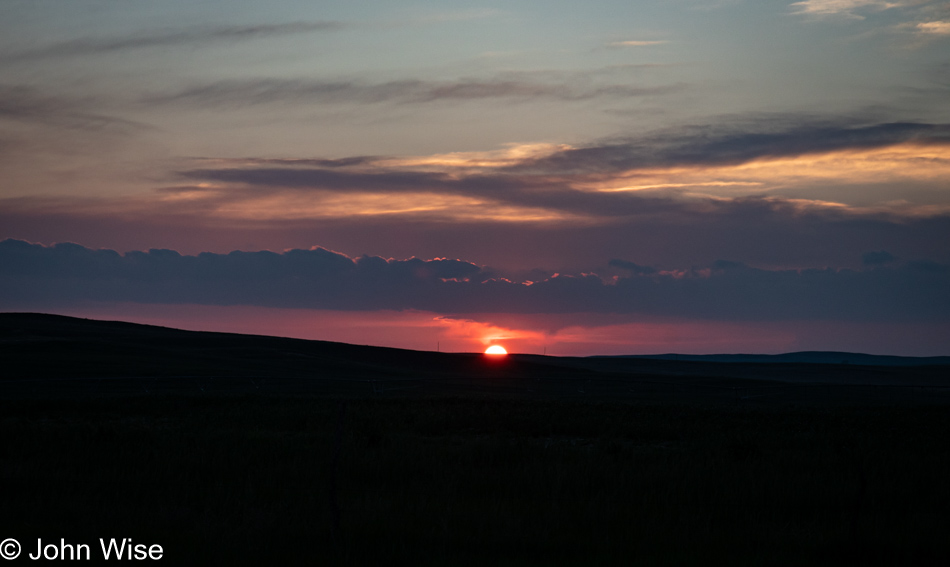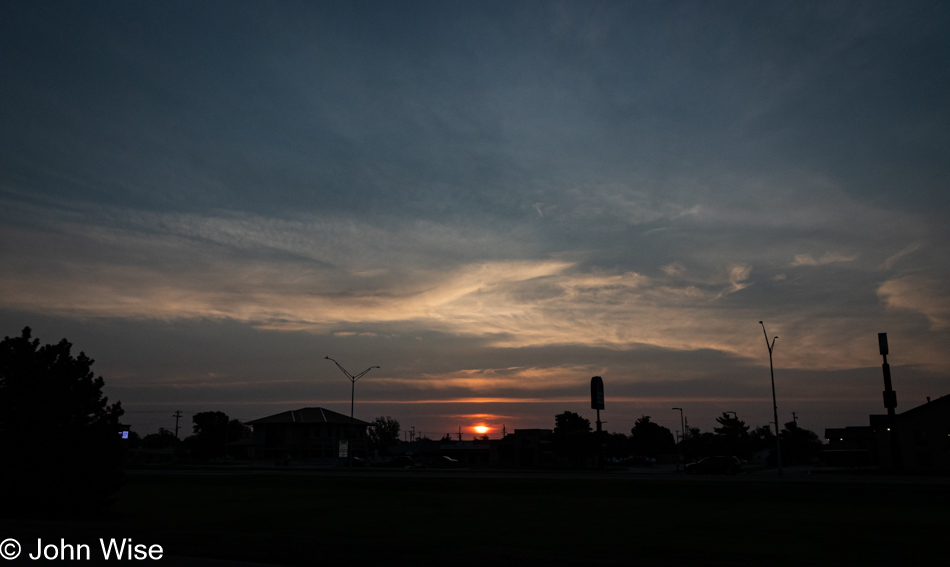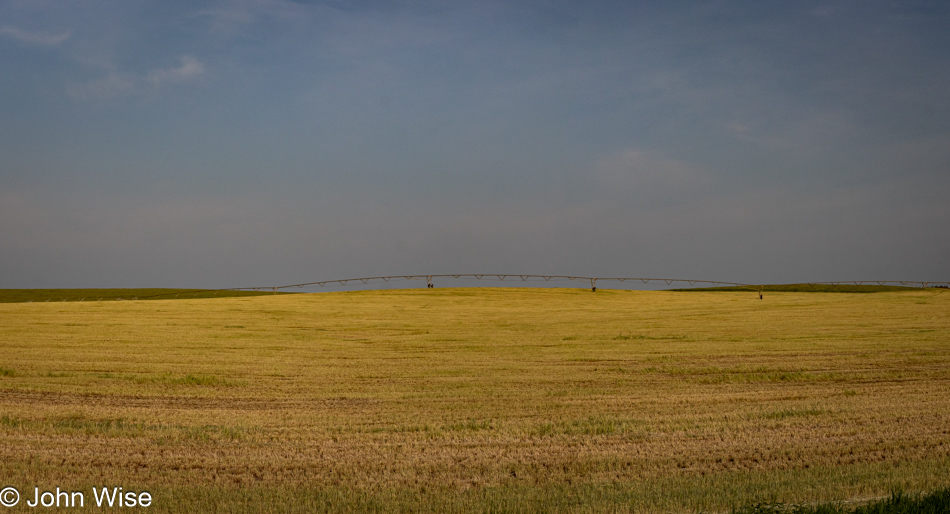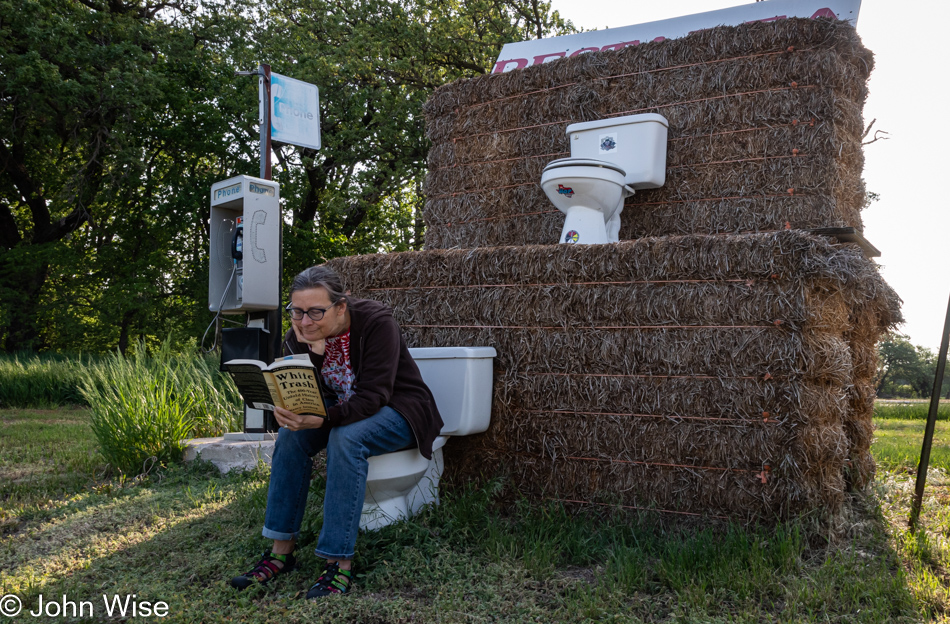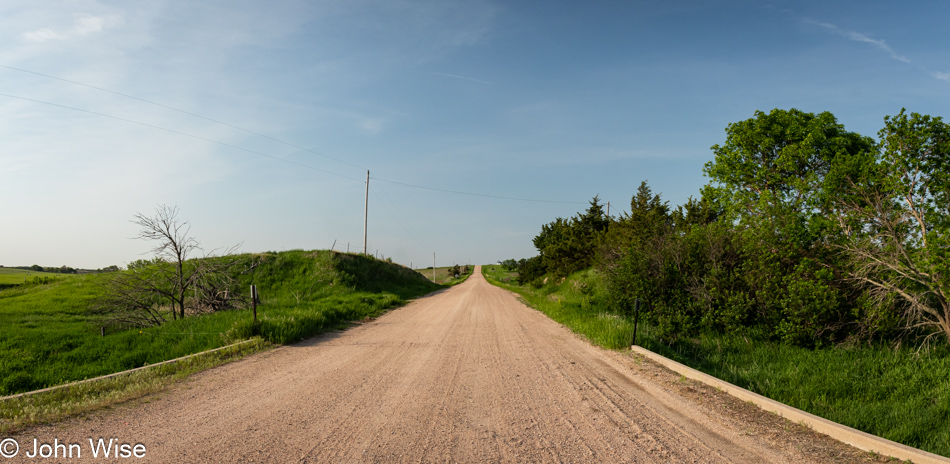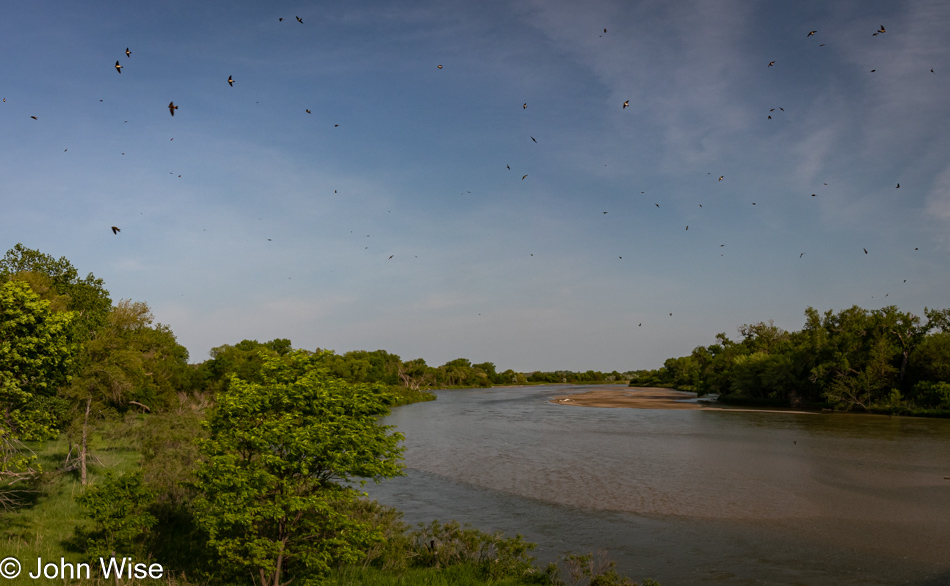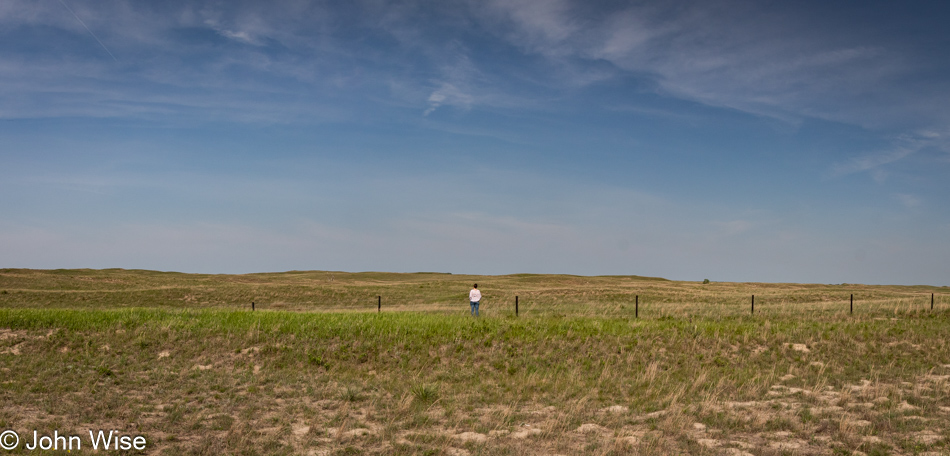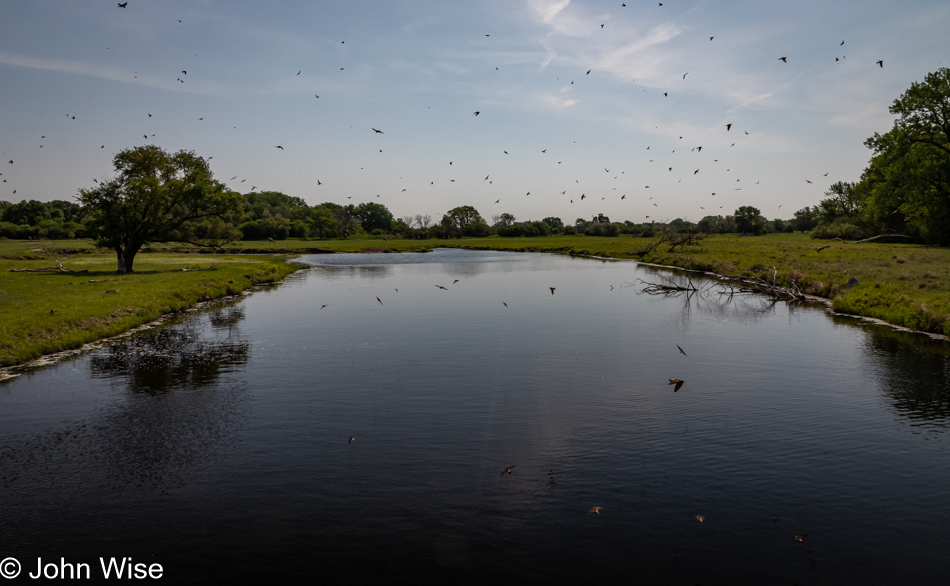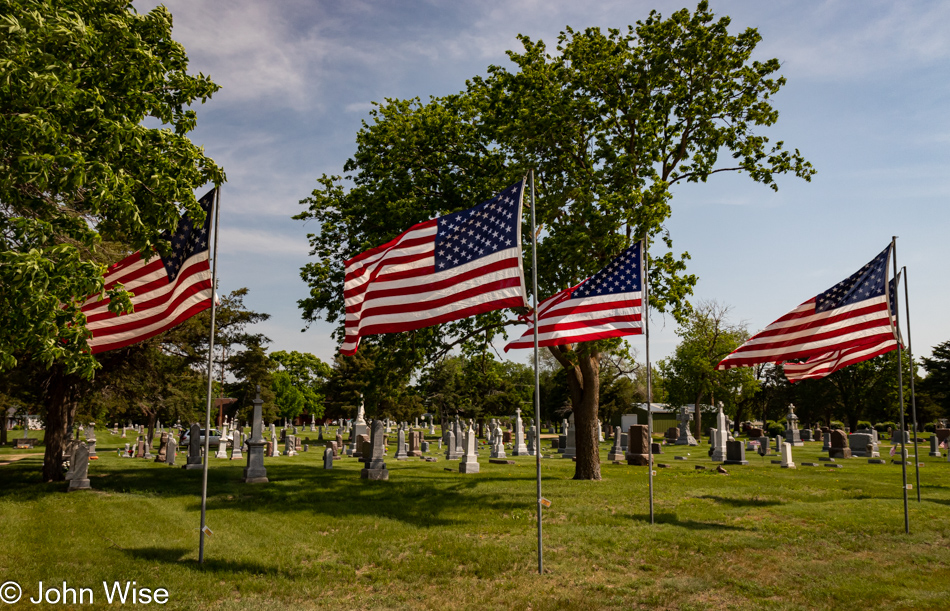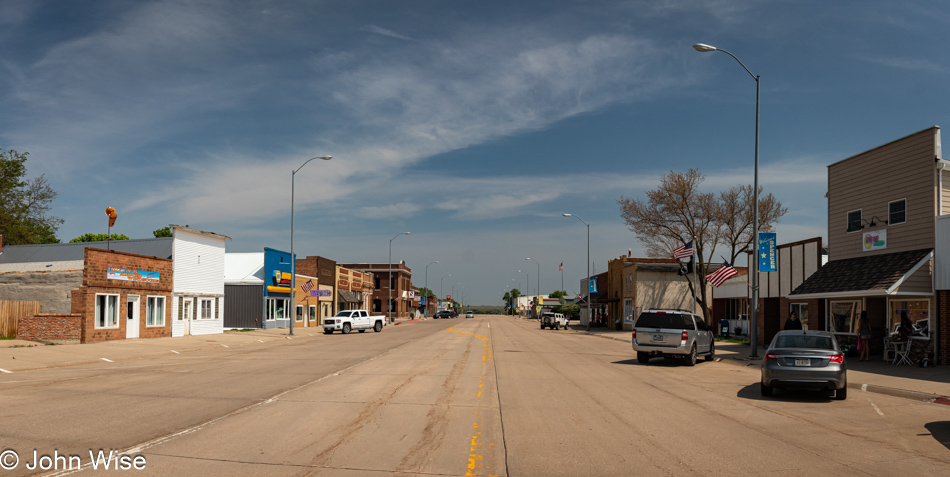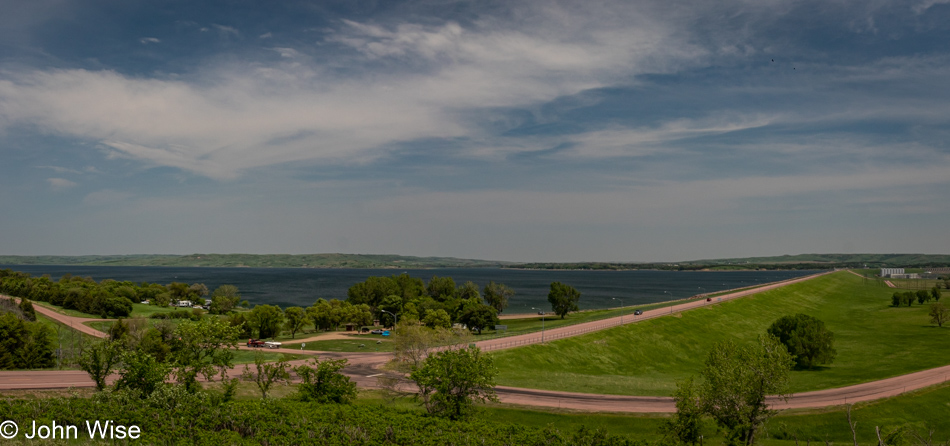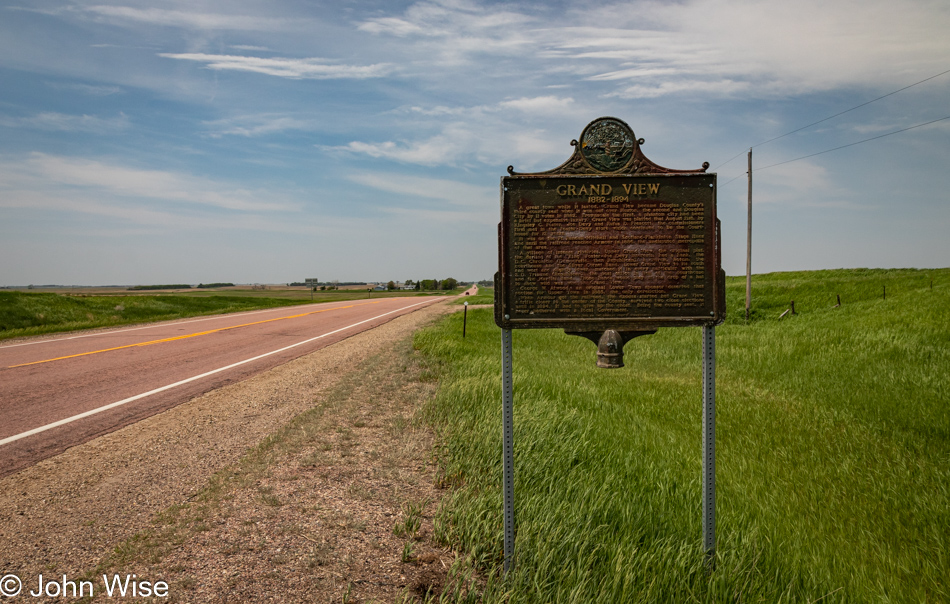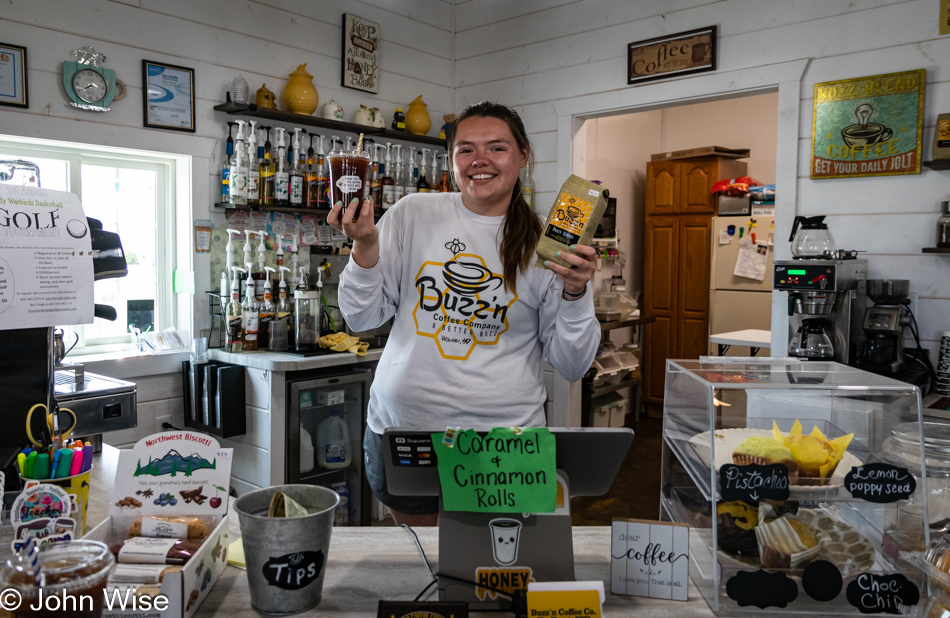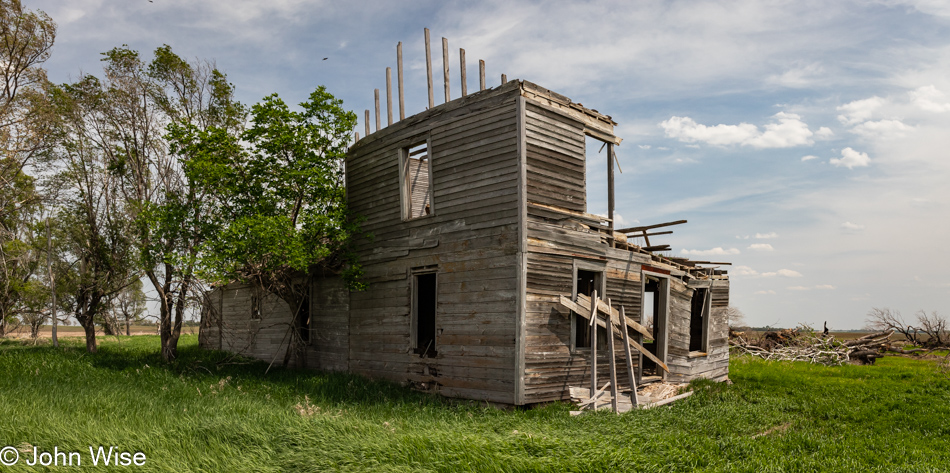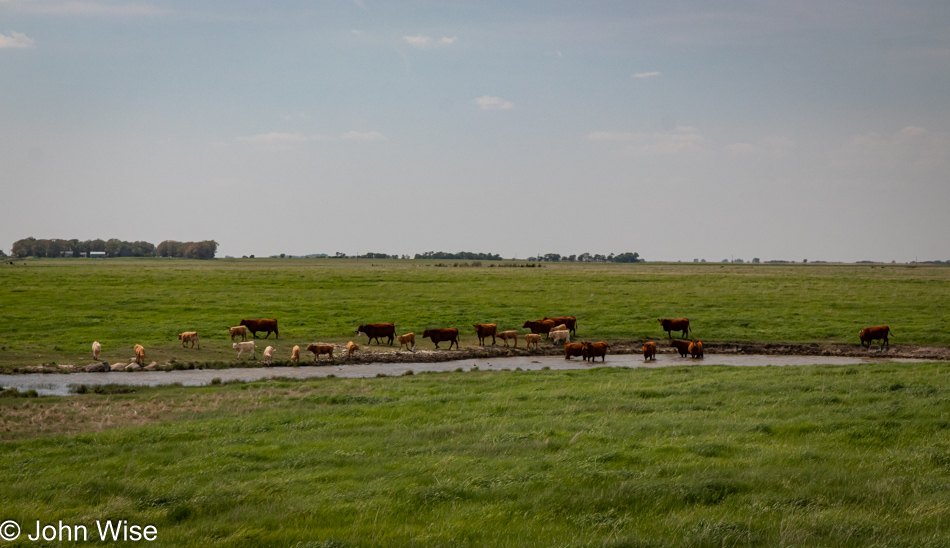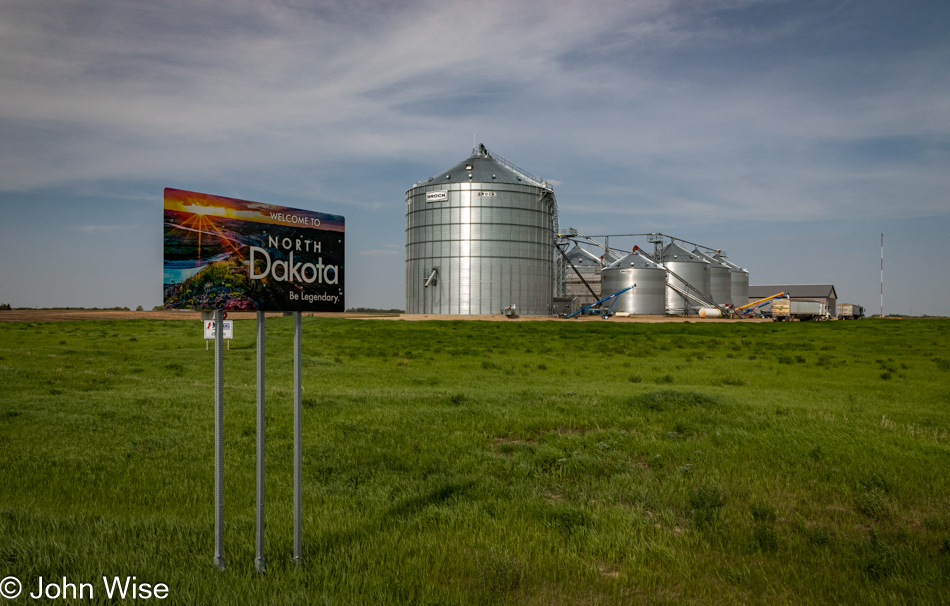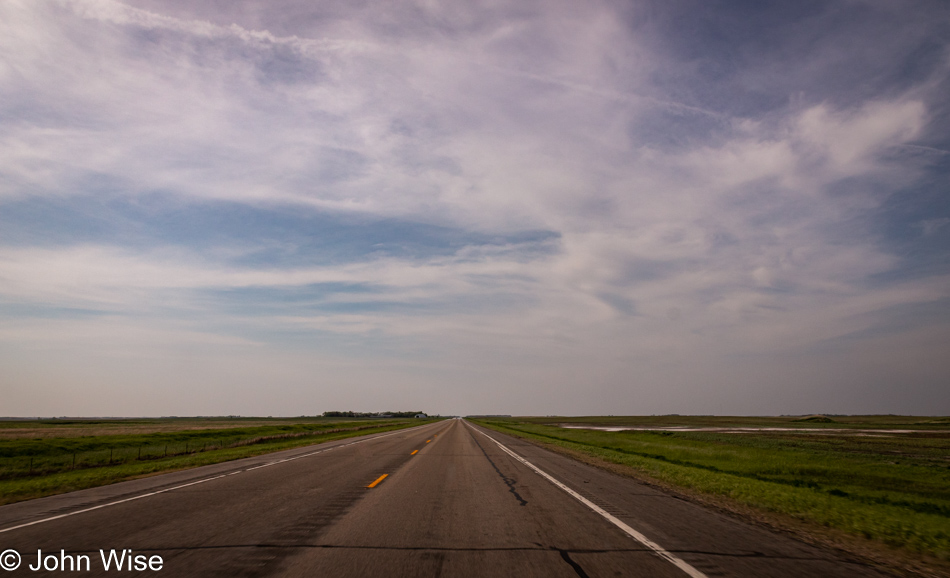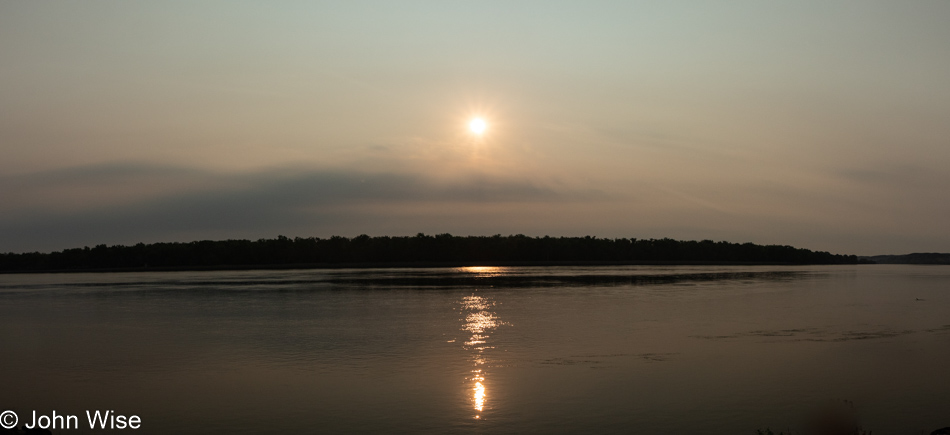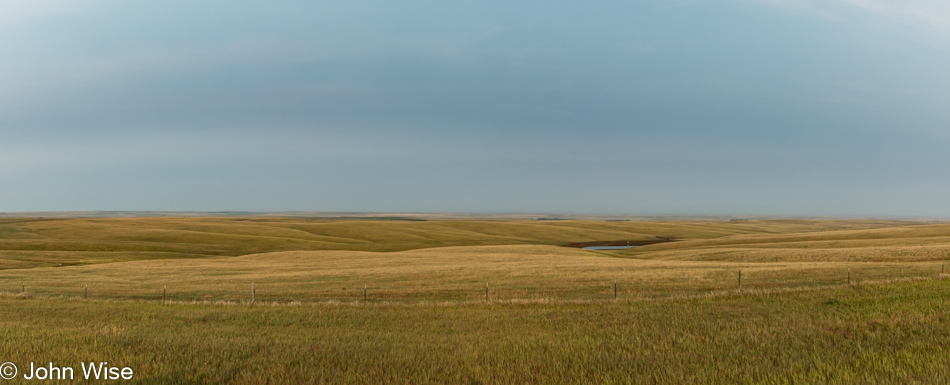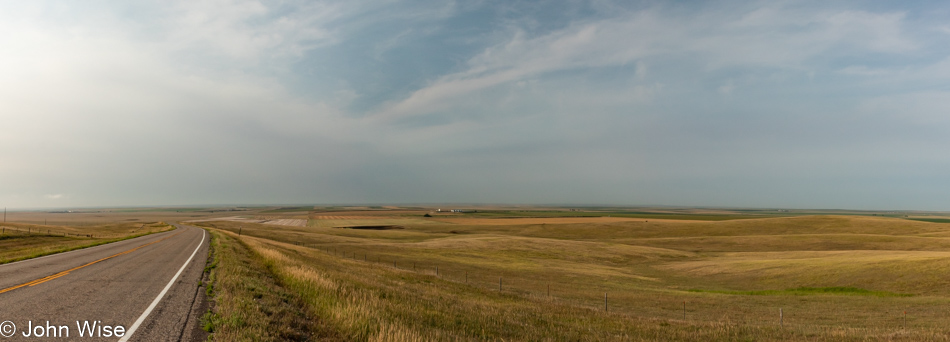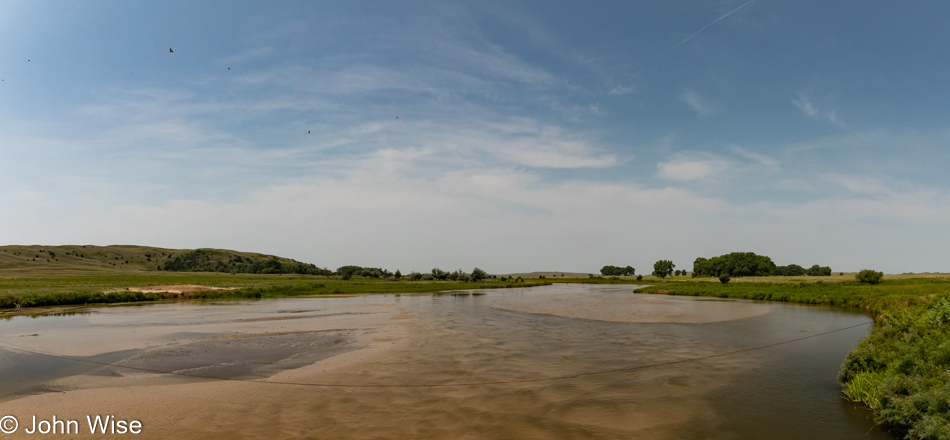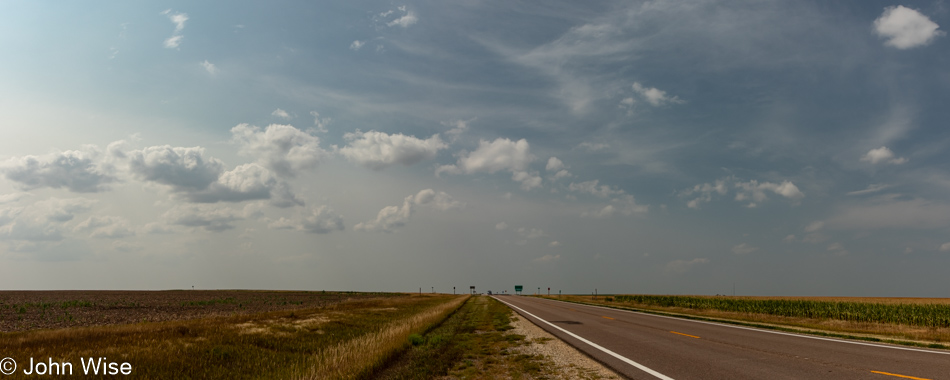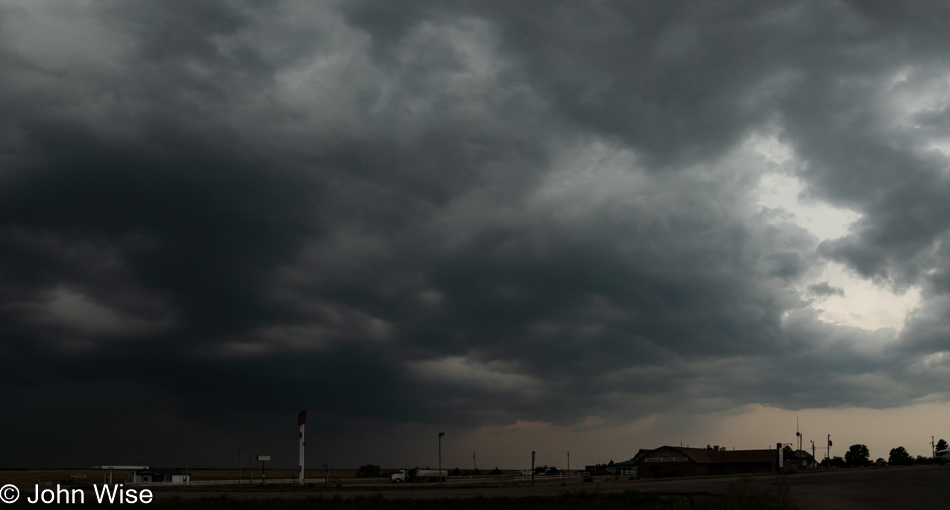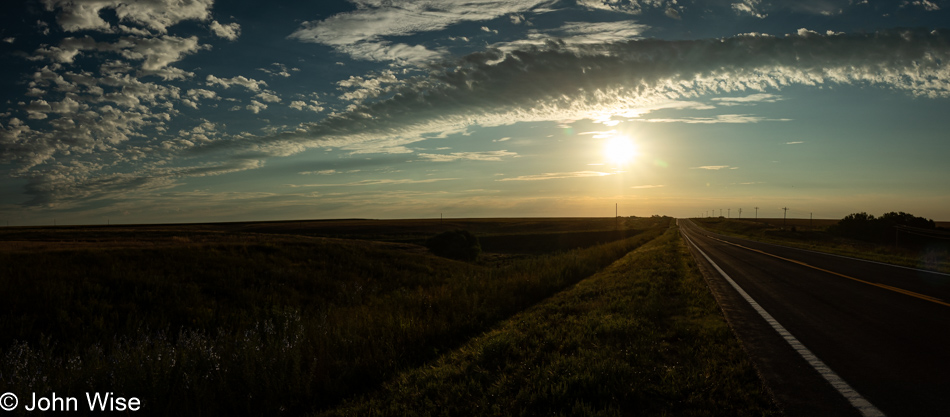
This was not the first sight that greeted me this morning; instead, I spotted a semi-truck driving by in front of the hotel while I was bringing my bags to the car. The trailer behind it was wide open and packed chock full of cow corpses with bloated bodies and hooves jutting to heaven. Good morning, rural Nebraska – or anywhere else with feed lots, I guess. While startling, maybe a bit weird, I wasn’t in any way disgusted. It’s the price we accept for beef raised on an industrial scale and mostly out of sight. As for the road ahead, it was bathed in golden light and welcoming me to enjoy another day on the road.
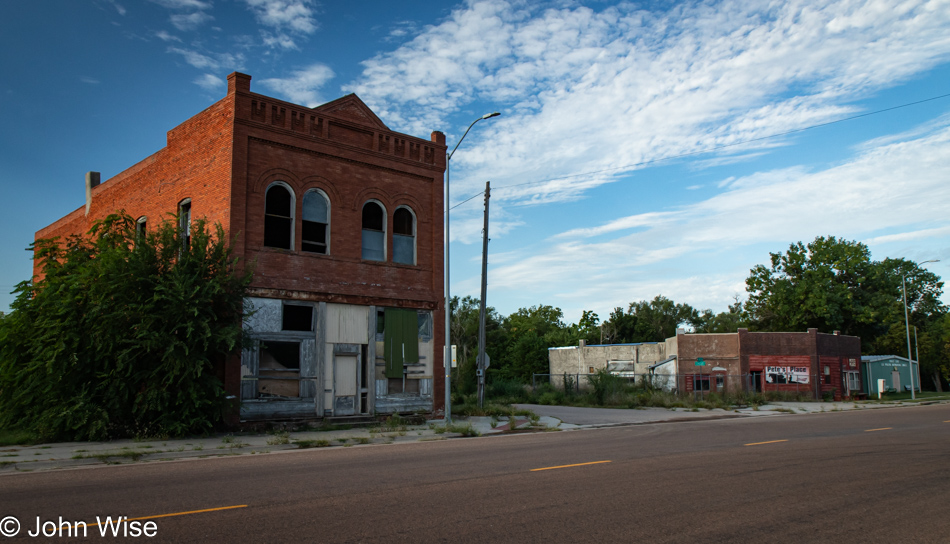
I’ll spend a lot of time today on US Highway 136 and passing many towns, such as this one, which is nearly a ghost town. The name of this place is Riverton, Nebraska, and it has a functional post office and maybe a bar called Pete’s Place Bar and Grill that might be open occasionally.
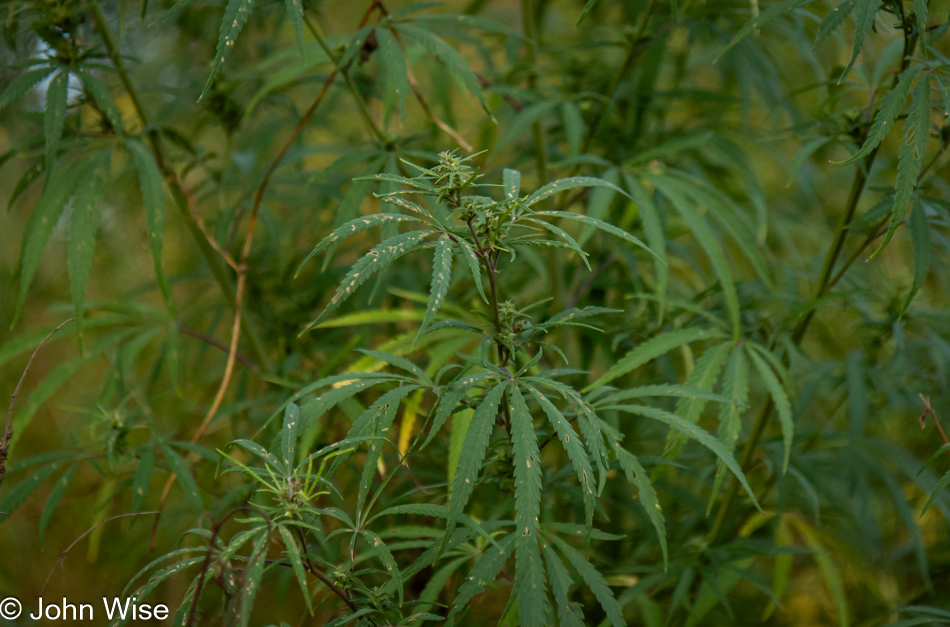
Not only are soybeans and corn in abundance, I’ve learned that hemp is growing everywhere. It only has the faintest scent of marijuana; it’s more of a fresh green plant smell than anything else.
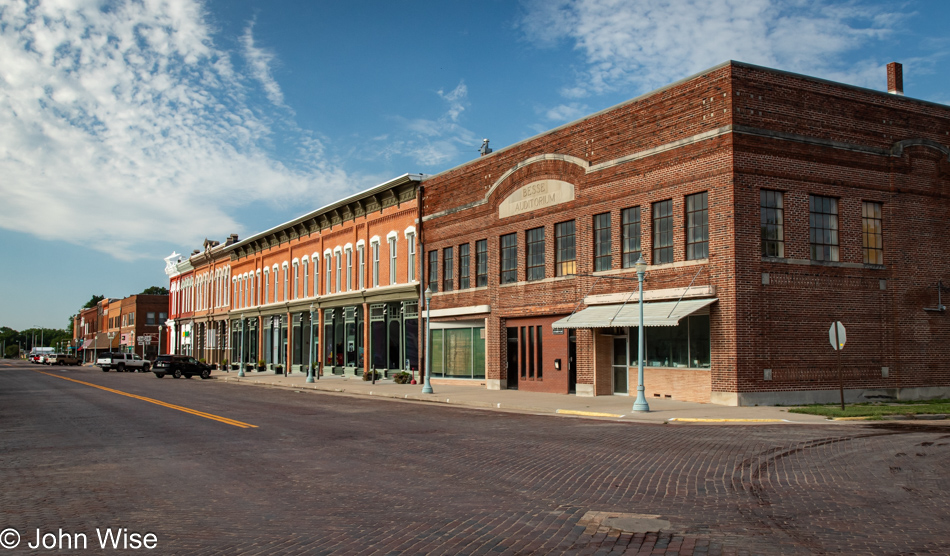
Here I am in Red Cloud, Nebraska, for the first time! Nope, that’s not true. When I called Caroline later in the day to ask about the Homestead National Historical Park she informed, “Yes, we’ve been there before, with Jay Patel back in 2004, and we also passed through Tecumseh, Red Cloud, and Crab Orchard.” No, is my memory really that out of whack? I planned this trip to take mostly new roads. We even have a map that shows the roads we’ve traveled before, but somehow my wires got crossed and I’m right back where I was 20 years ago. This is Red Cloud, just one of a few places I’ll revisit today.

Well, at least this corn wasn’t the same corn that would have been here in May 2004. Maybe the corn back then hadn’t even sprouted yet.
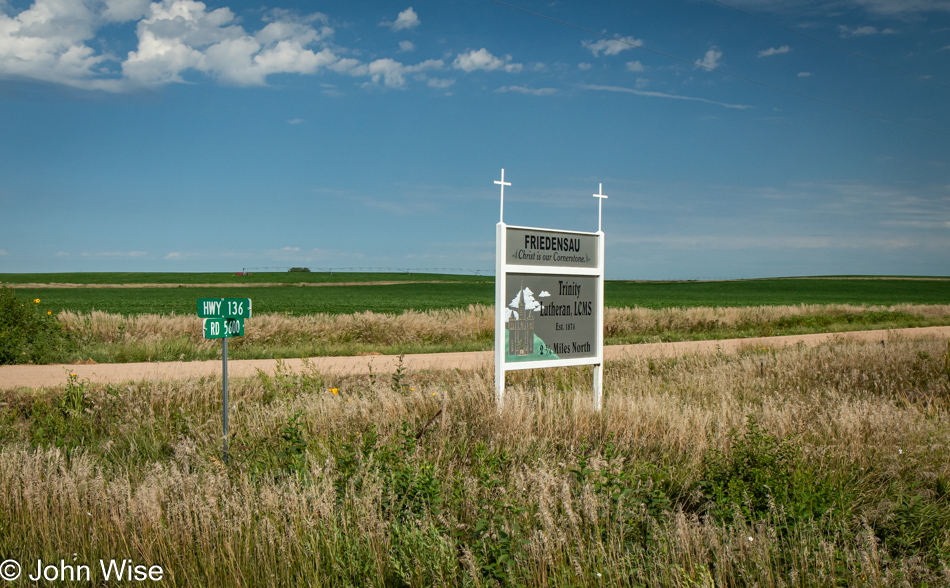
One good thing about a selective memory is that things can be new all over again. After getting to the hotel and seeing the sign for the Friedensau Trinity Lutheran Church 2.25 miles up a dirt road, I wish I’d made an effort to visit it. Hopefully, Caroline and I will pass this way again after I forget that I was here before, and she’ll remind me of this post in which I said it appears that the old church is well worth the visit.
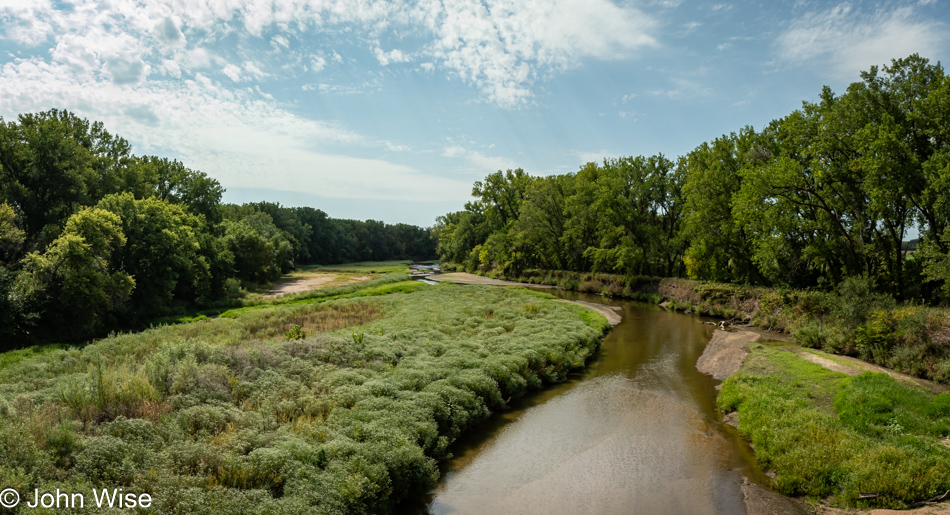
In the blog, the Little Blue River was disparaged 20 years ago as a muddy little affair that was not worth photographing. Well, the waters are clear today, and while not exactly abundant, I felt them worthy of a photo. I need to stop referencing our ancient history. Maybe it would have been better to write everything, and only when I was done, learn of my omissions.
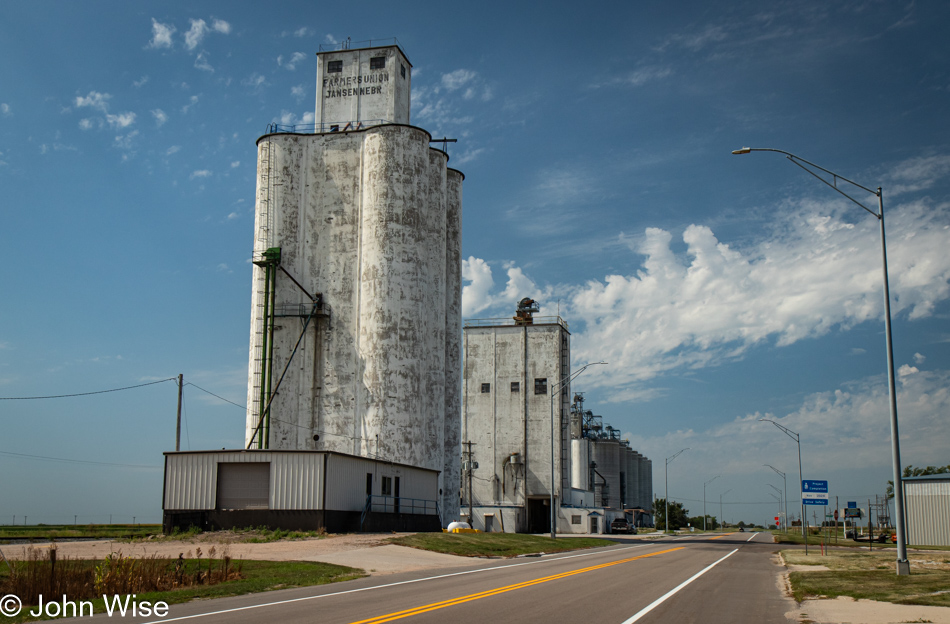
The good thing about this journey on US Highway 136 is that I’m taking my time and not racing through, which we were guilty of quite often back then. When we took that trip with Jay, it was a quick adventure across America via Yellowstone, across the Dakotas to Minnesota and Wisconsin before turning back west, all in a blindingly fast ten days. Today, I stopped in Jensen, Nebraska, when a particular sign and these grain silos caught my eye.

Here is a place certainly from a bygone era, once offering Golden Fried Chicken. There was a time when this was standard fare in every diner across America, but now it’s chicken nuggets, pizza, and fries. This is the sign I just mentioned, and I was already well down the main road when I decided to verify whether the faded sight I thought I saw was real. It was at my U-turn that I couldn’t leave the silo alone and had to capture it, too, which ultimately will help equate to too many images from this small town.
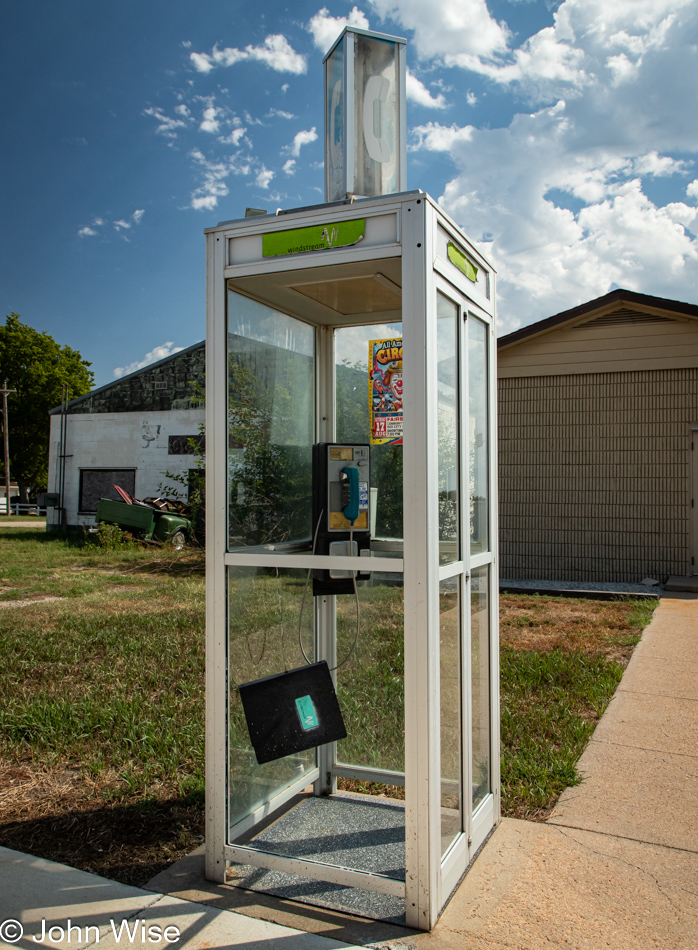
I say too many because this old, mostly intact phone booth is also from Jensen. Oh, how I wanted there to be a dial tone and a phonebook, but those things weren’t to be. I would have scrounged the change and called Caroline on a pay phone for the proverbial sake of it.
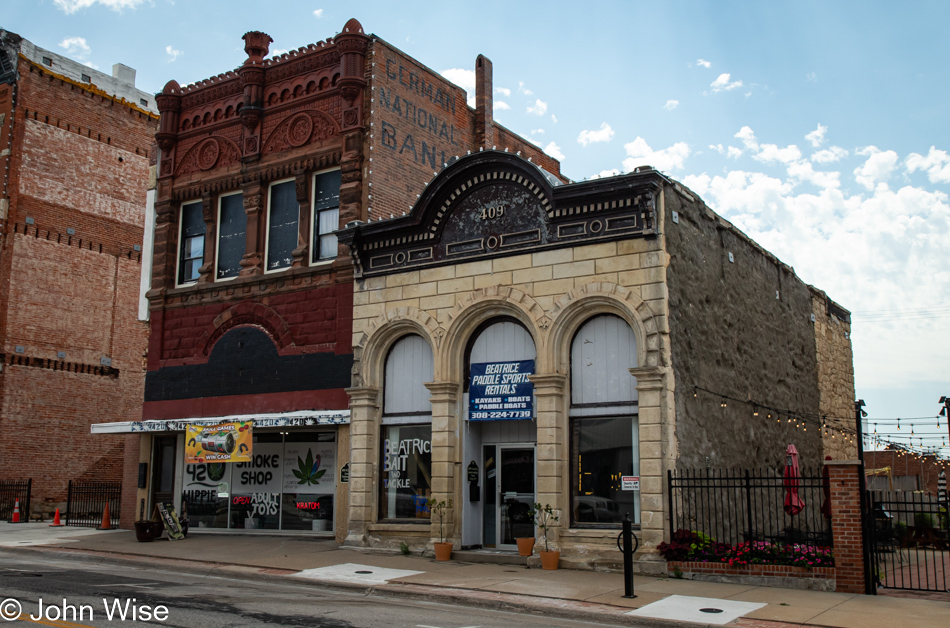
What used to be a grand red brick building in Beatrice, Nebraska, that housed the German National Bank, probably at least until the late 1930s or early 1940s, is now a smoke shop selling Kratom and adult toys. Driving through Beatrice, it’s immediately obvious that this was once a very prosperous city, likely the kind of place in which MAGA talks to its residents. It was once that spot on the map that was great, so why not make it great again?
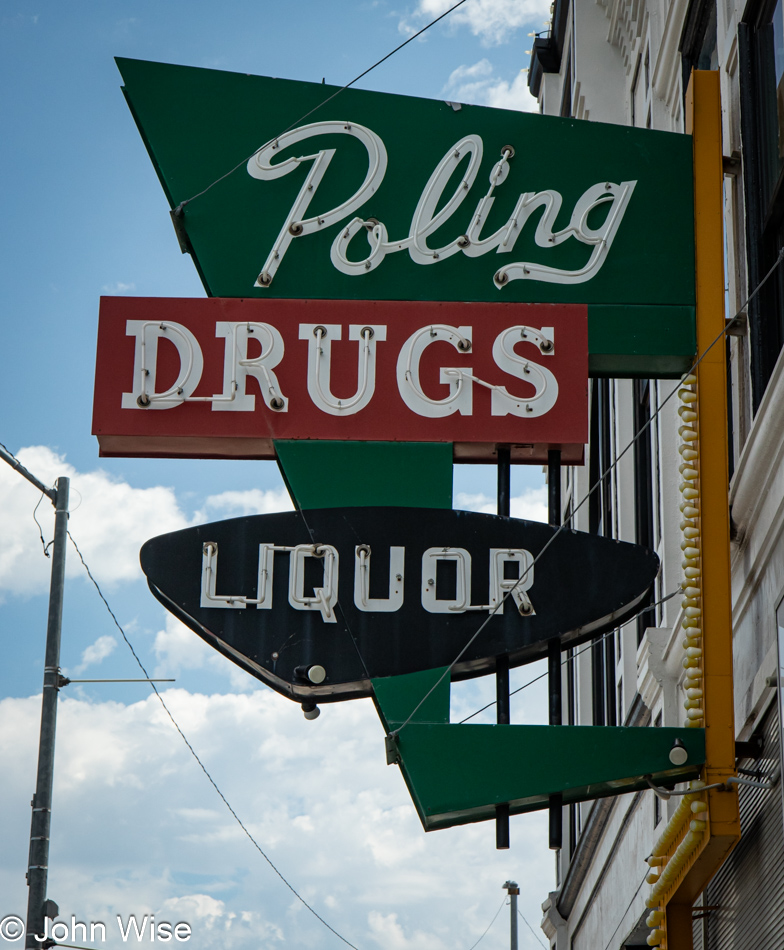
These signs were symbols of prosperity when people invested in magnificent signage. Today, we hang plastic banners or paint something in the windows, as the proprietors know deep in their bones not to waste money on something when they’ll likely not even honor a full year of their lease. These things were lost when farming underwent fundamental changes involving efficiencies, consolidation, and corporatization. The distribution of wealth within the community slowly disappeared. Like the frog in a pot being brought to a boil, it doesn’t realize it’s being cooked until it’s too late. The communities watched a farm here and a farm there fall victim to load defaults, insufficient capital to update equipment and remain competitive, or the inability to attract the hard workers that made farms work back in the day. From a multinational corporation, private equity, or a wealthy individual, how is that money supposed to support these outposts in the middle of farmland? To make these places great again would mean a fundamental shift, either back to family farming on manageable pieces of land or by innovations that create localized wealth in a place reliant on these thousands of square miles of corn and soybeans growing in all directions.
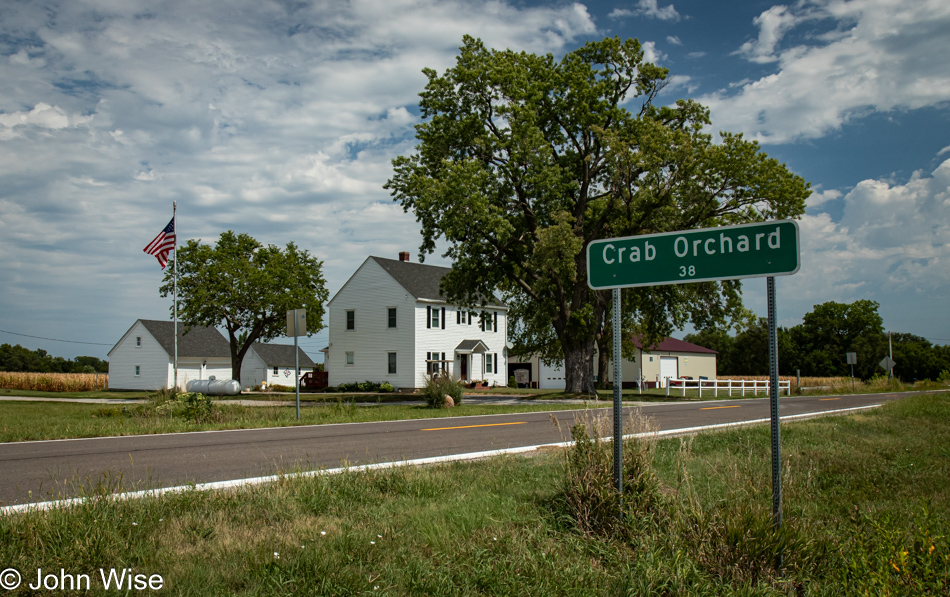
As I saw this town creeping in on the map, you have to now understand that I thought this was the first time I’d ever seen a place called Crab Orchard. I thought the sound of it was nice and that it would be where I’d pull over for lunch. With a population of only 38 people, I was expecting a dispersed group of people spread out over more than a few acres. Taking this photo, I could see something ahead that caught my eye and curiosity. It was the remnants of a small town. There’s still a post office, but that’s about it.
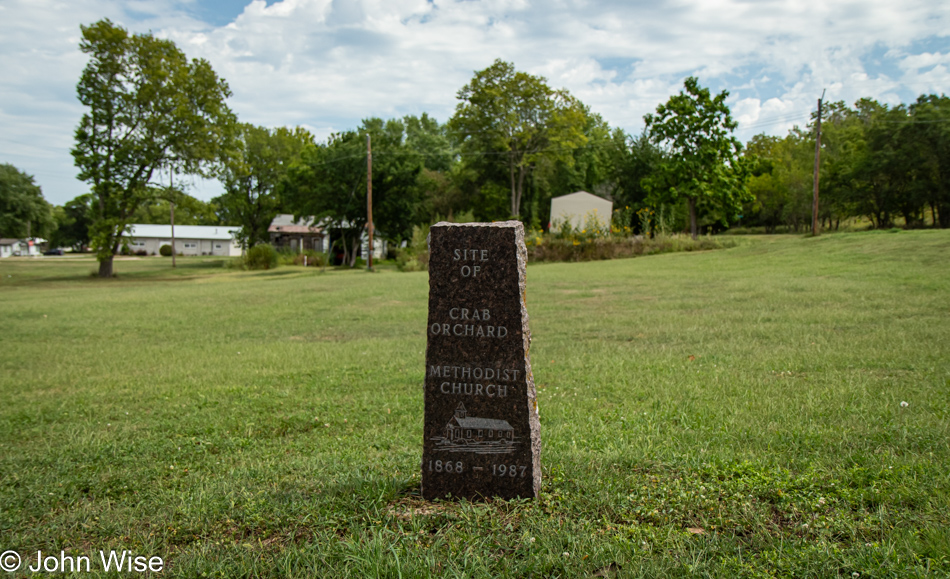
There are many empty lots around what would have been called a town long ago. This “gravestone” stands at the site of the Methodist Church, which stood here from 1868 until 1987, when it must have burned to the ground. There was also a building that was the gas station and garage, but essentially, this is a ghost town, or will be soon. Now I have to look at signs along the highway that point to place names down dusty unpaved county roads, possibly towns similar to this almost forgotten outpost. Farming and prosperity are not synonymous across the heartland of America anymore. No wonder a vast constituency is pissed off, feeling like the wheels are coming off the machine that helped them pay their bills or maintain open schools, grocery stores, churches, or gas stations.
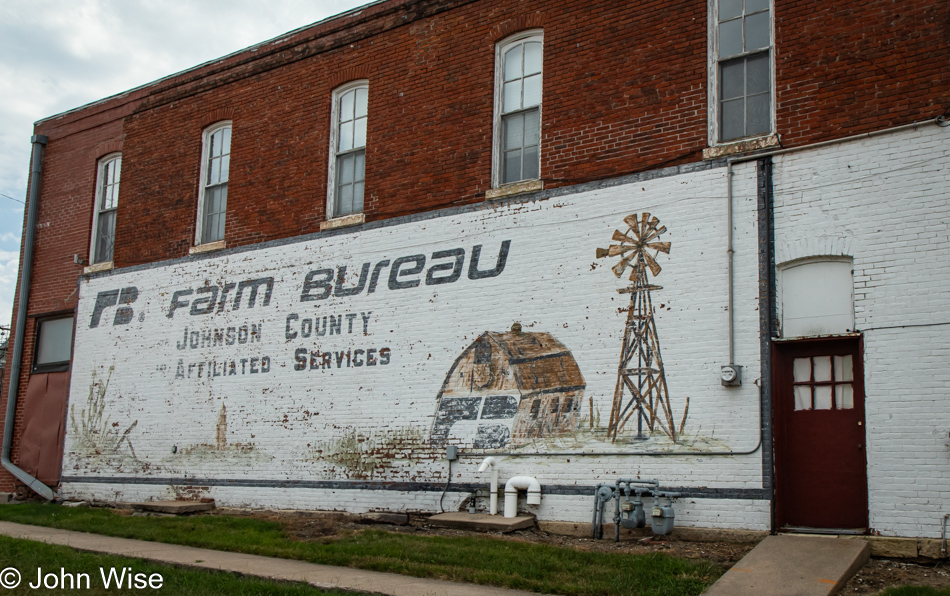
A fading Farm Bureau mural in Tecumseh points at what was once a major part of the glue that helped small farmers stay on farms. Economic power shifts, and market realities that fed the corn and soybean demands driven by fast and cheap food, silage for our cattle, and profits for conglomerates were no match for the needs of quality of life in rural America.
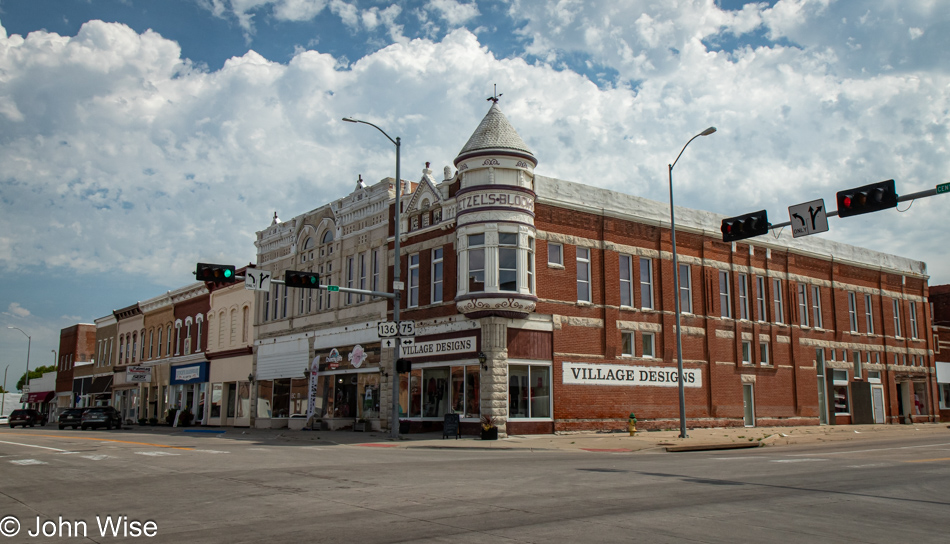
It’s a bitter dish of economic reality turning sour on this corner of Nebraska. The good thing about focusing on nature and wide open spaces while ignoring the plight of towns and cities is that I can trick myself into witnessing an idyllic side of America that looks better. Maybe I should have been an investment banker. This beautiful town is called Auburn.

Ah, another of my axes I love to grind, overt racist shit. After tens, dozens, and hundreds of miles of soy and corn, even historic markers pique my interest as it’s something different, allowing me to shift my thoughts away from the predicament of these towns along the way. And, wouldn’t you know, the one I stop for is talking about “Half-Breeds.” How is this still standing here? How has it not been defaced? Oh yeah, look around you, John: lots of pasty-white people live out here and 27 Mexicans. The sign tells of Half-Breed Road; I wouldn’t have noticed if it hadn’t been pointed out. Still, I’m incredulous that these things haven’t been repaired.
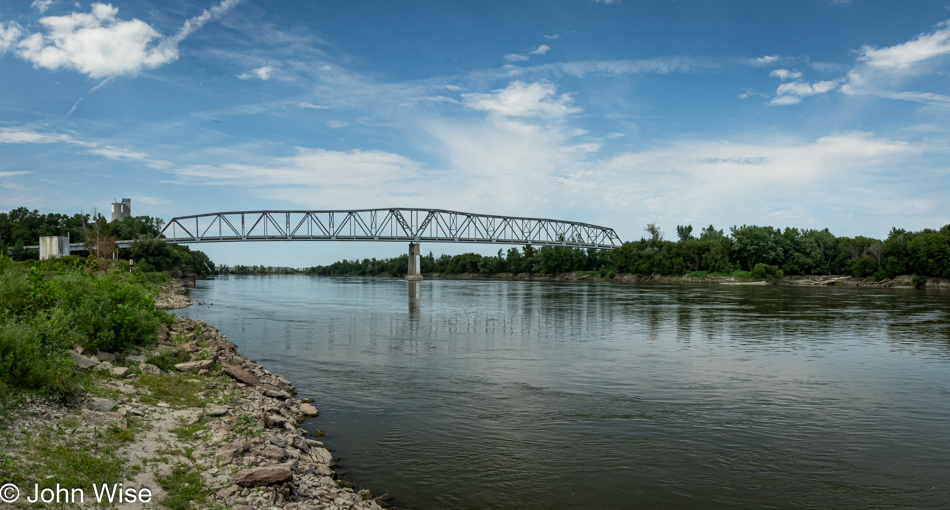
I’m in Brownville, Nebraska, and maybe at a Lewis and Clark campsite, but the location could have been given the name to attract visitors as I’m not sure this is official. This is the Missouri River, and on the opposite shore is the state of Missouri.
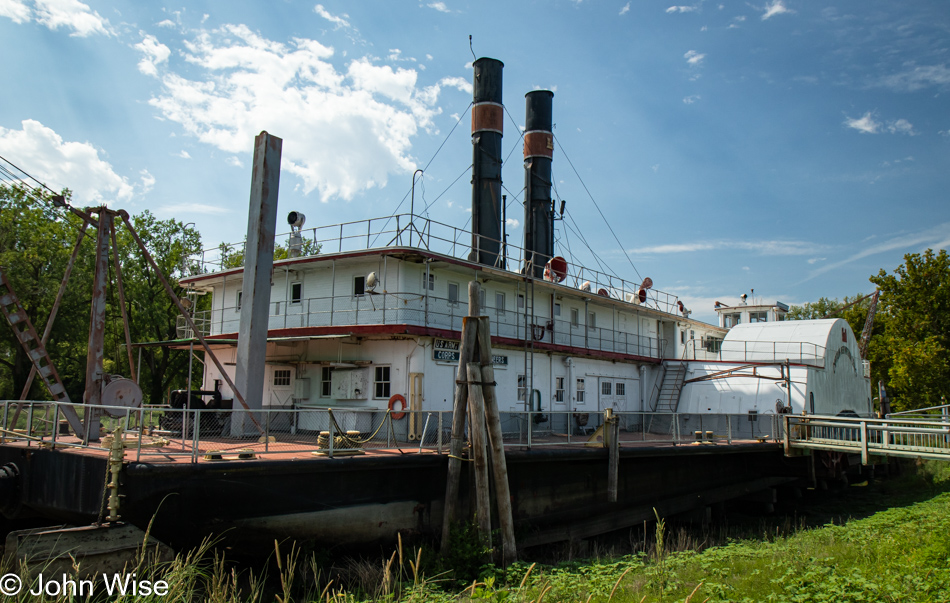
This is the Captain Meriwether Lewis Dredge, a historic vessel, which can be visited by booking a tour after calling the phone number on the locked gate of the ramp. I failed to note the number for a future visit, though I’m almost certain I can figure it out should we ever stroll through again.
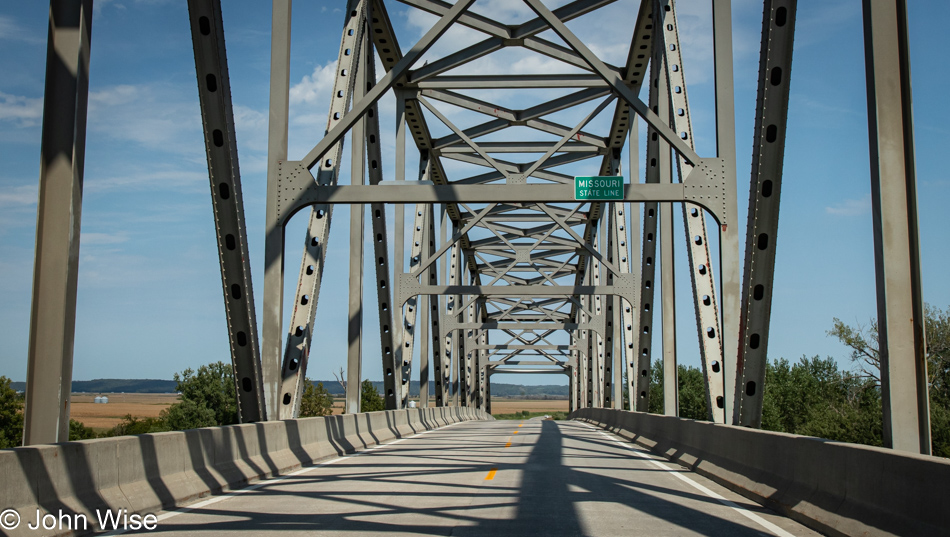
Up there on one of the beams is the sign demarking the Missouri State Line.
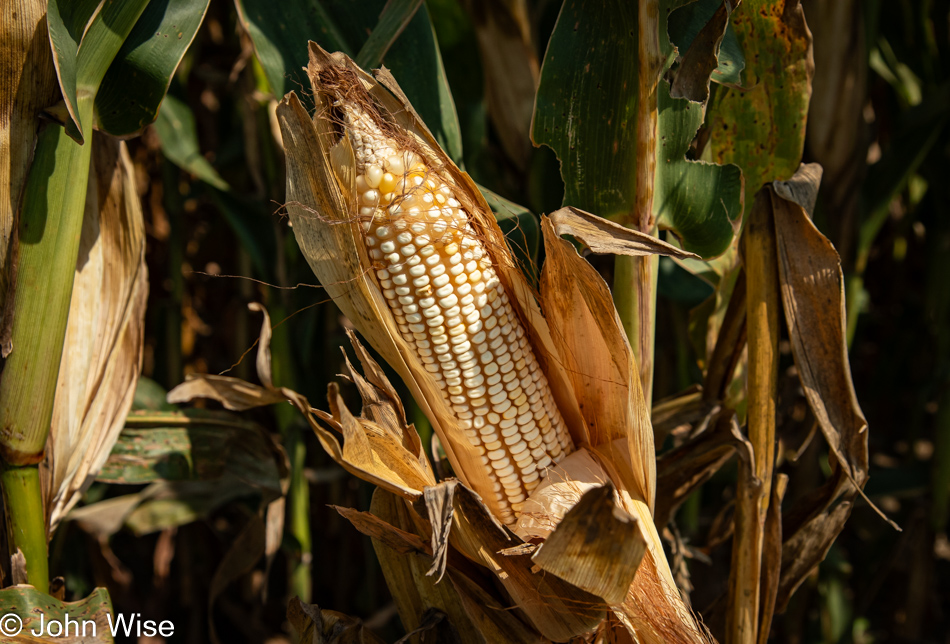
Aside from sweltering humidity, more corn, and soybeans, the first big differences between the state I left behind and Missouri are fireworks and weed, as in the recreational form of cannabis. That was Missouri, at least the small corner I passed through.
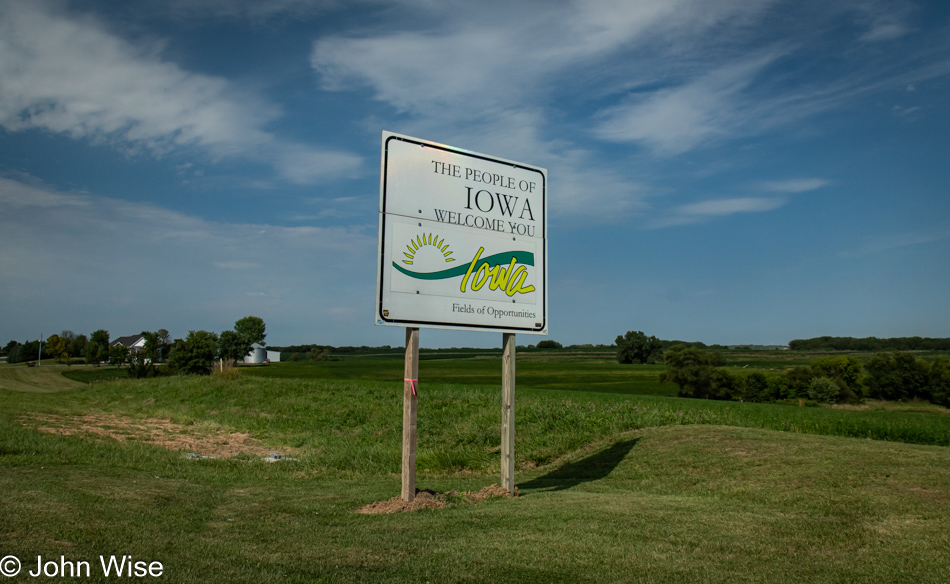
Welcome to Iowa, home to more corn and soy.
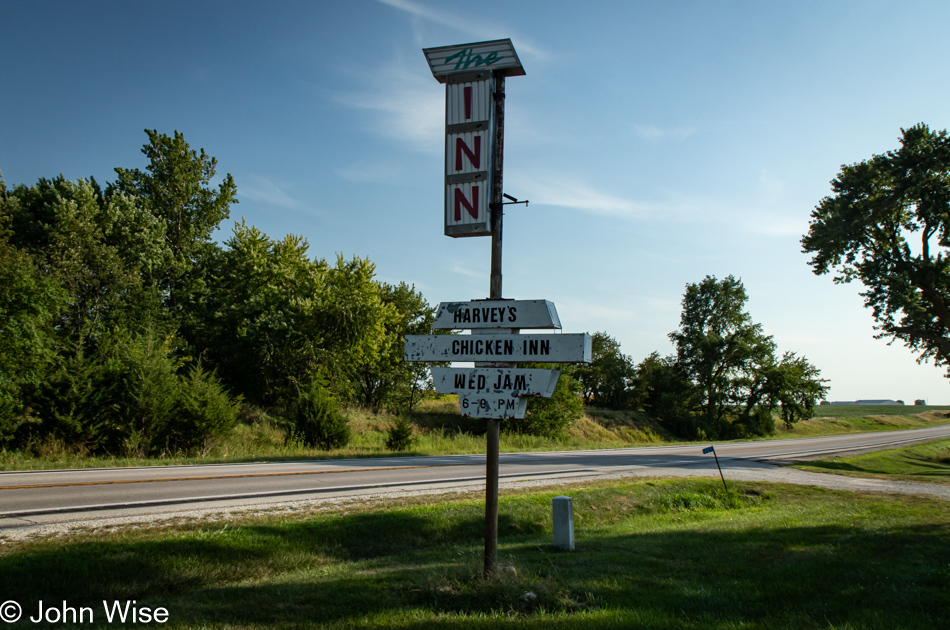
This second reference to fried chicken today, found here in Creston, Iowa, at Harvey’s Chicken Inn, suggests a mid-west/Great Plains tradition of fried chicken dinners. Now I want some.
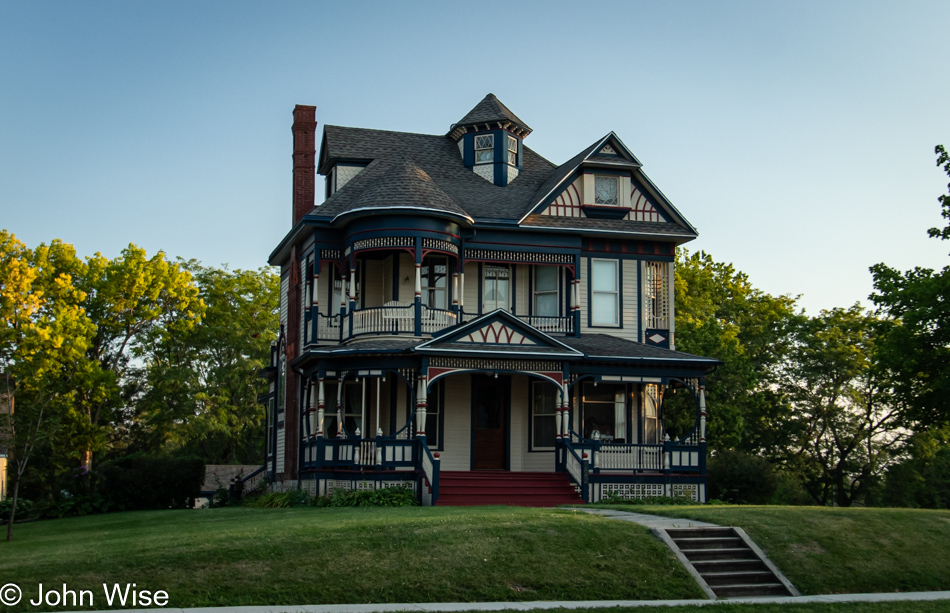
This is not a fried chicken restaurant in Osceola, Iowa, where I’ll be spending the night, nor is it my hotel, that’s across the street.
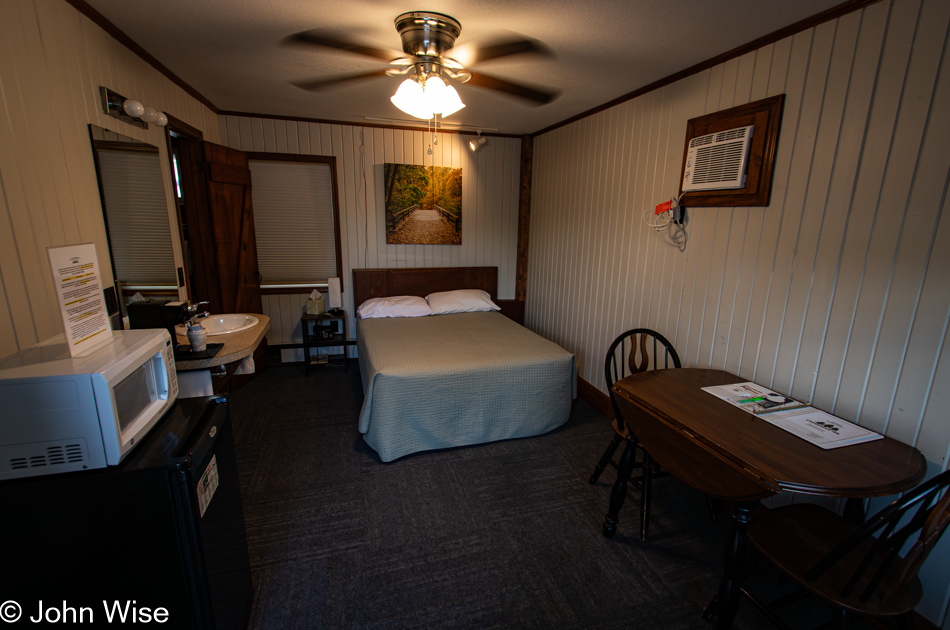
I’m at the Evergreen Inn in a small but cute enough room with everything I need, including the bargain price of about $60 for the night. I wonder if I’ll dream of corn and soybeans.
